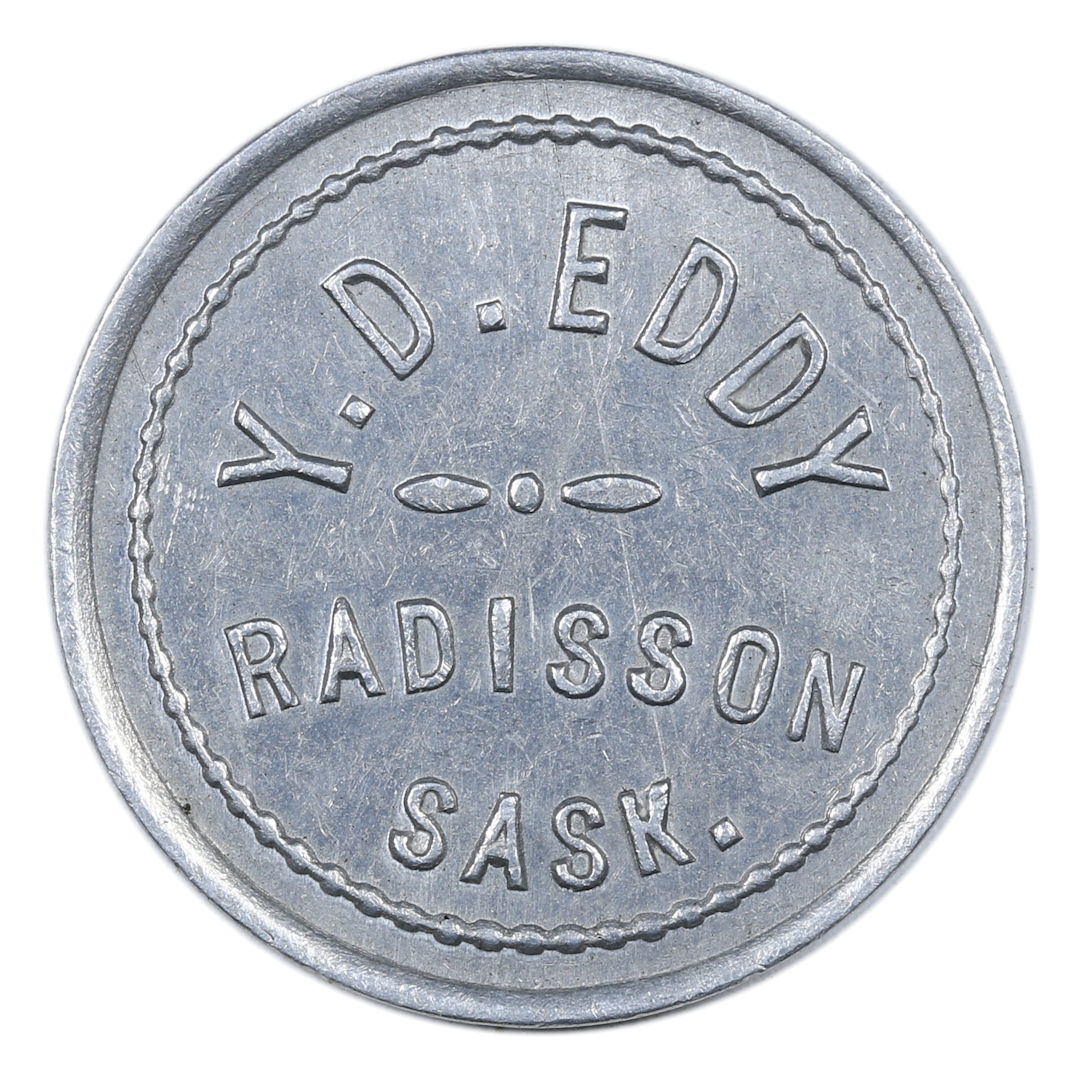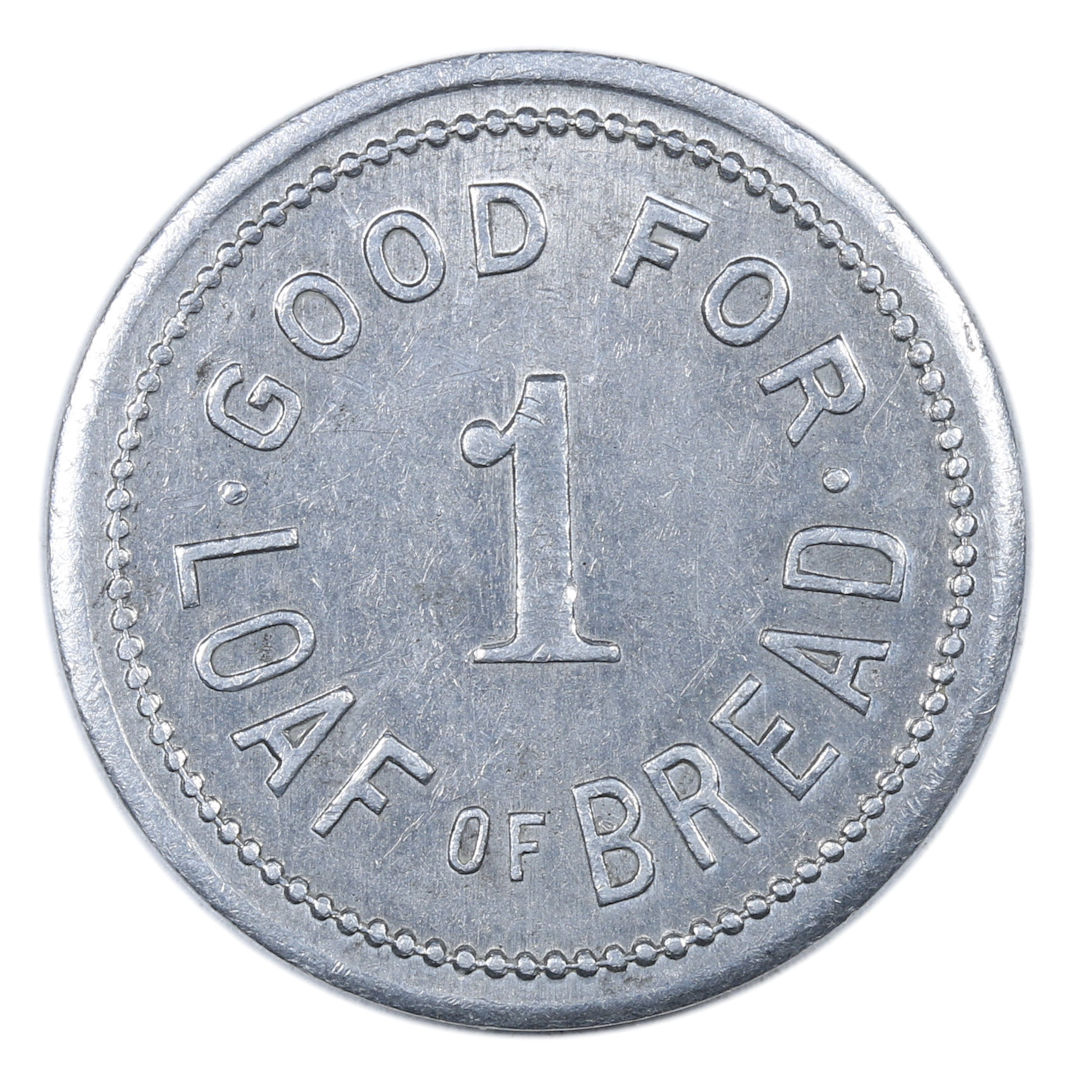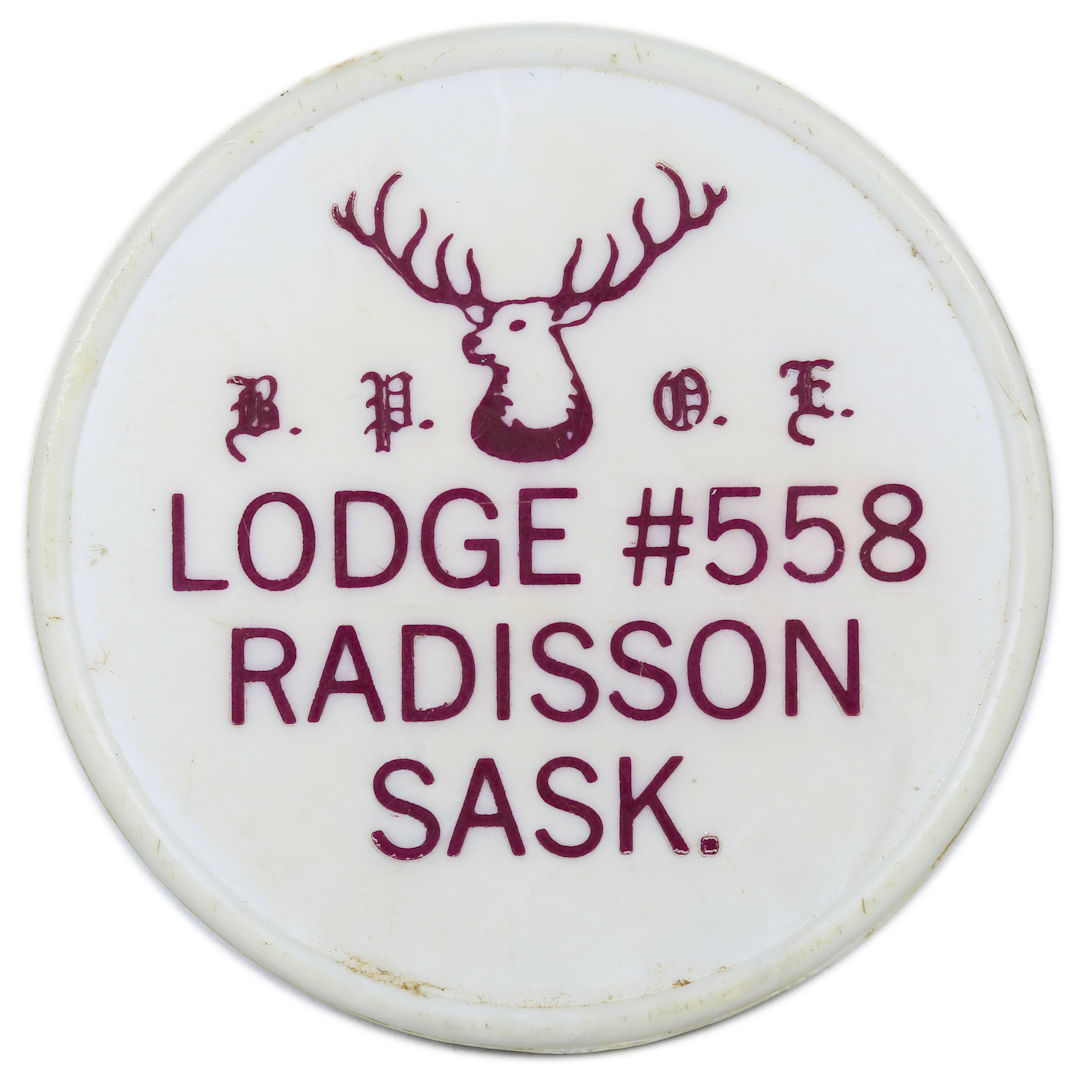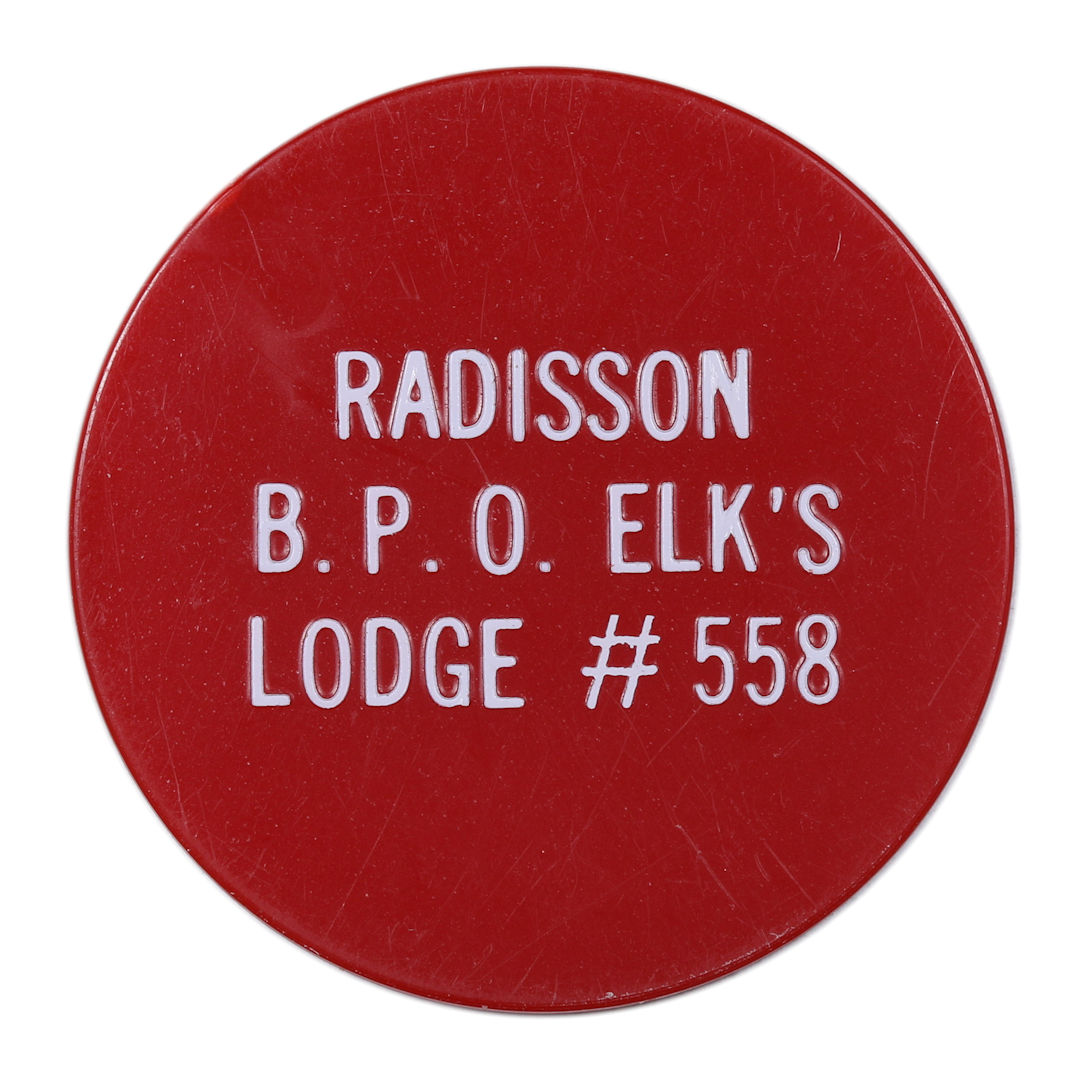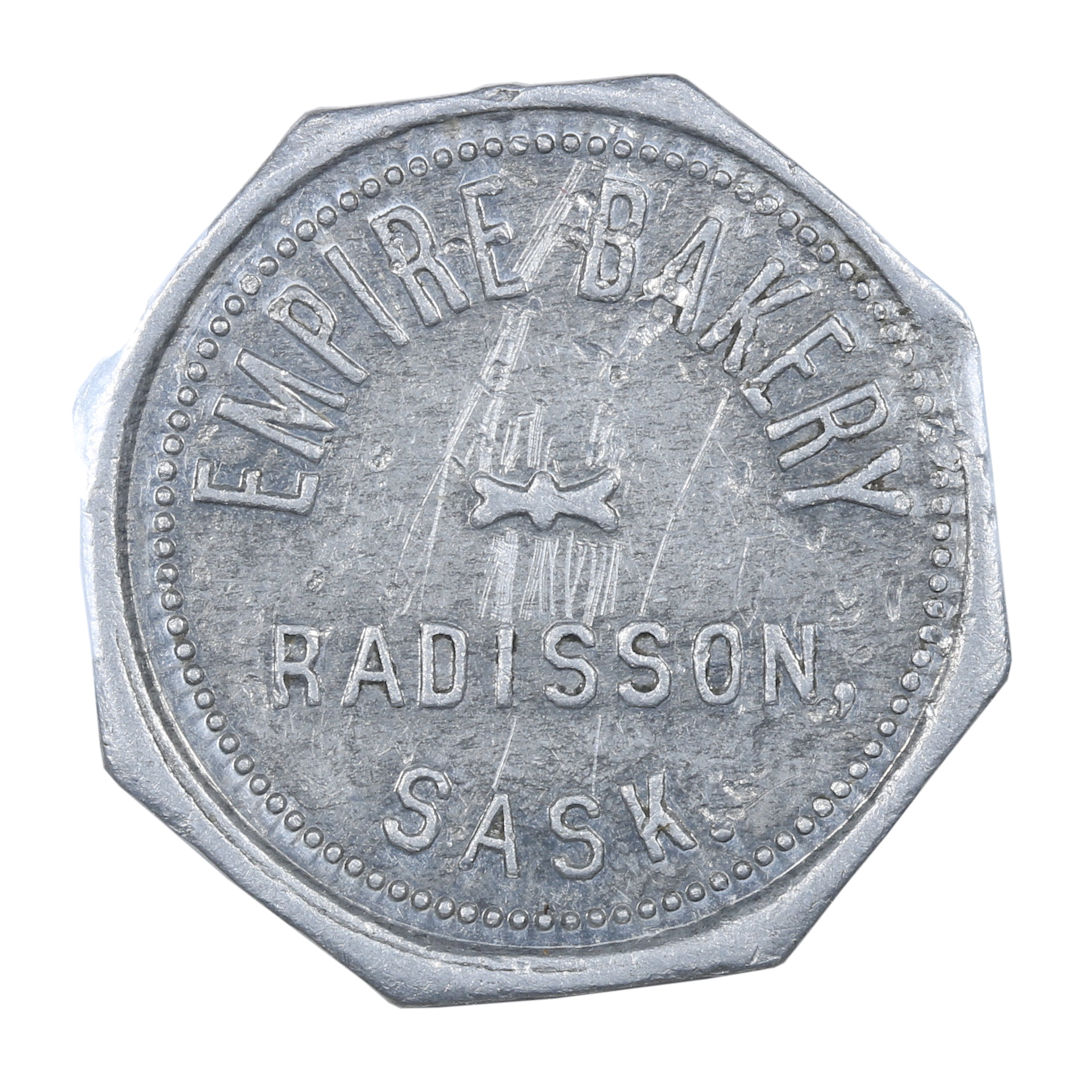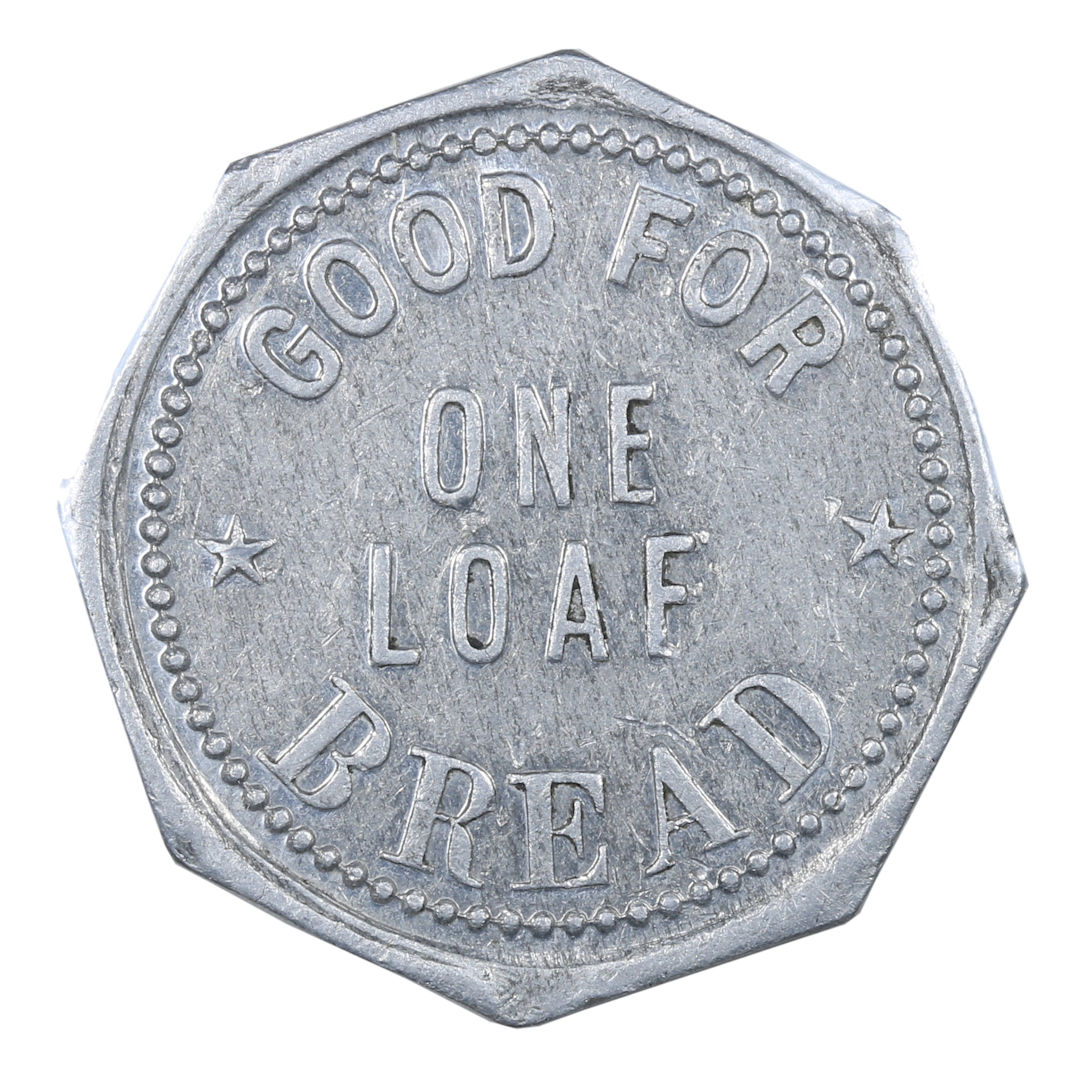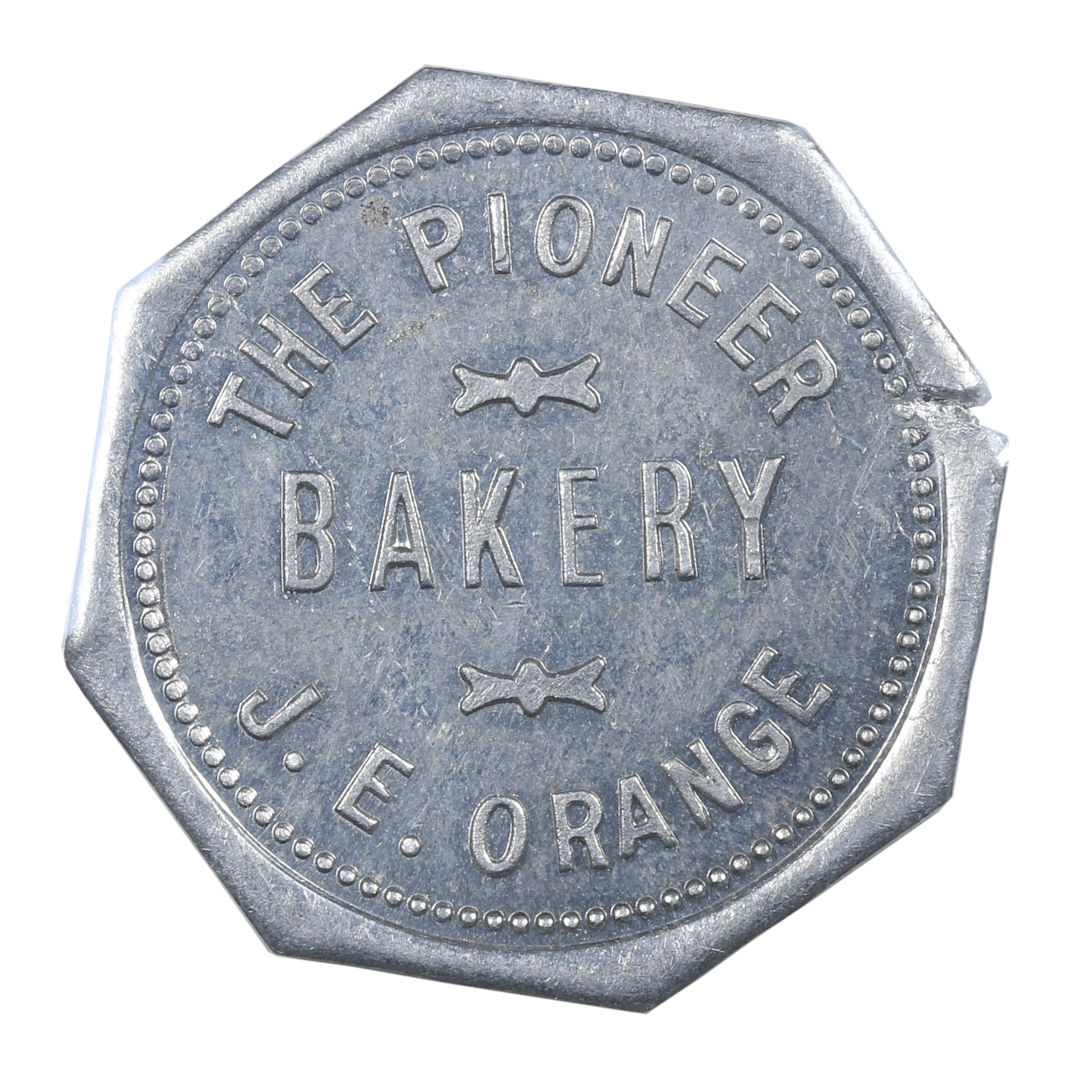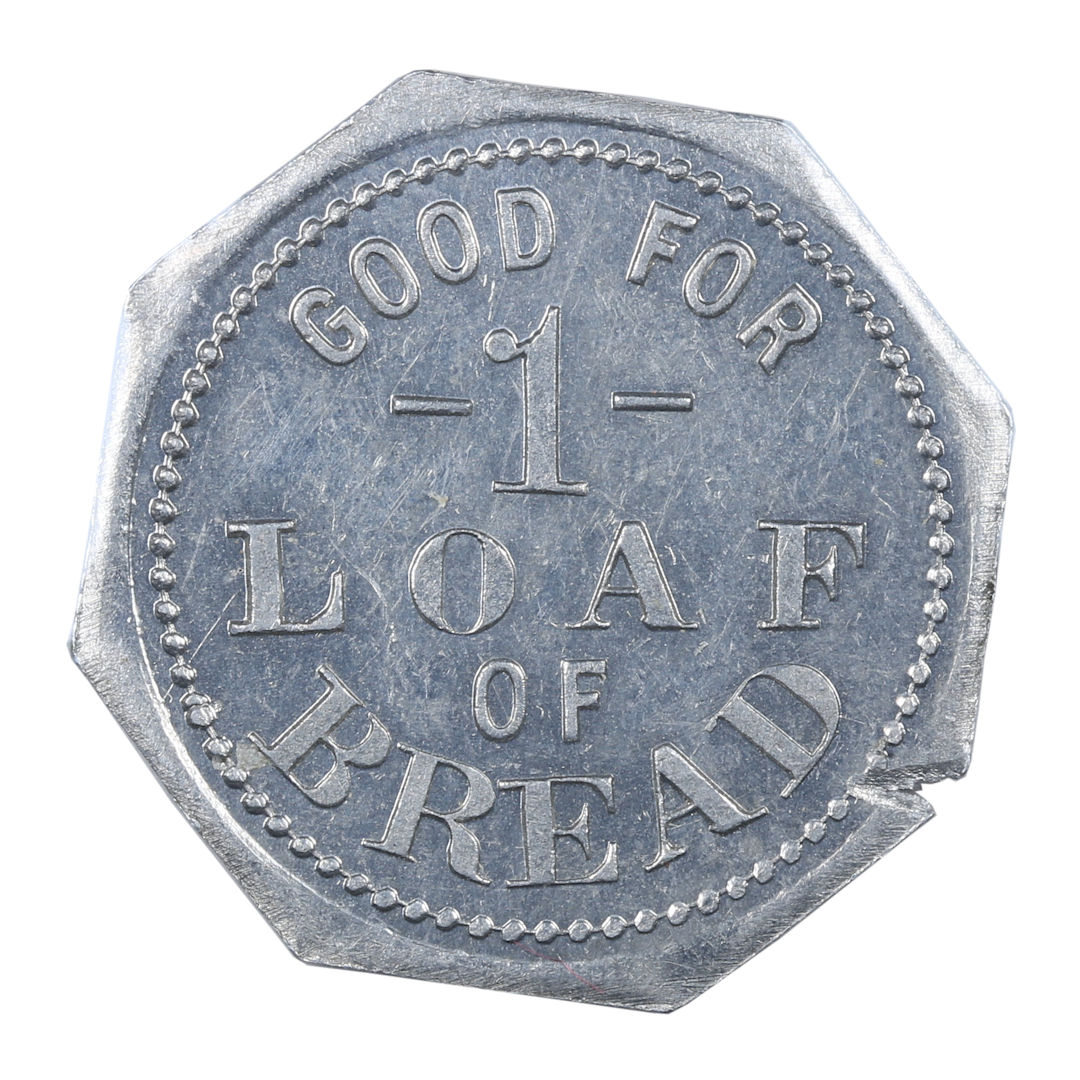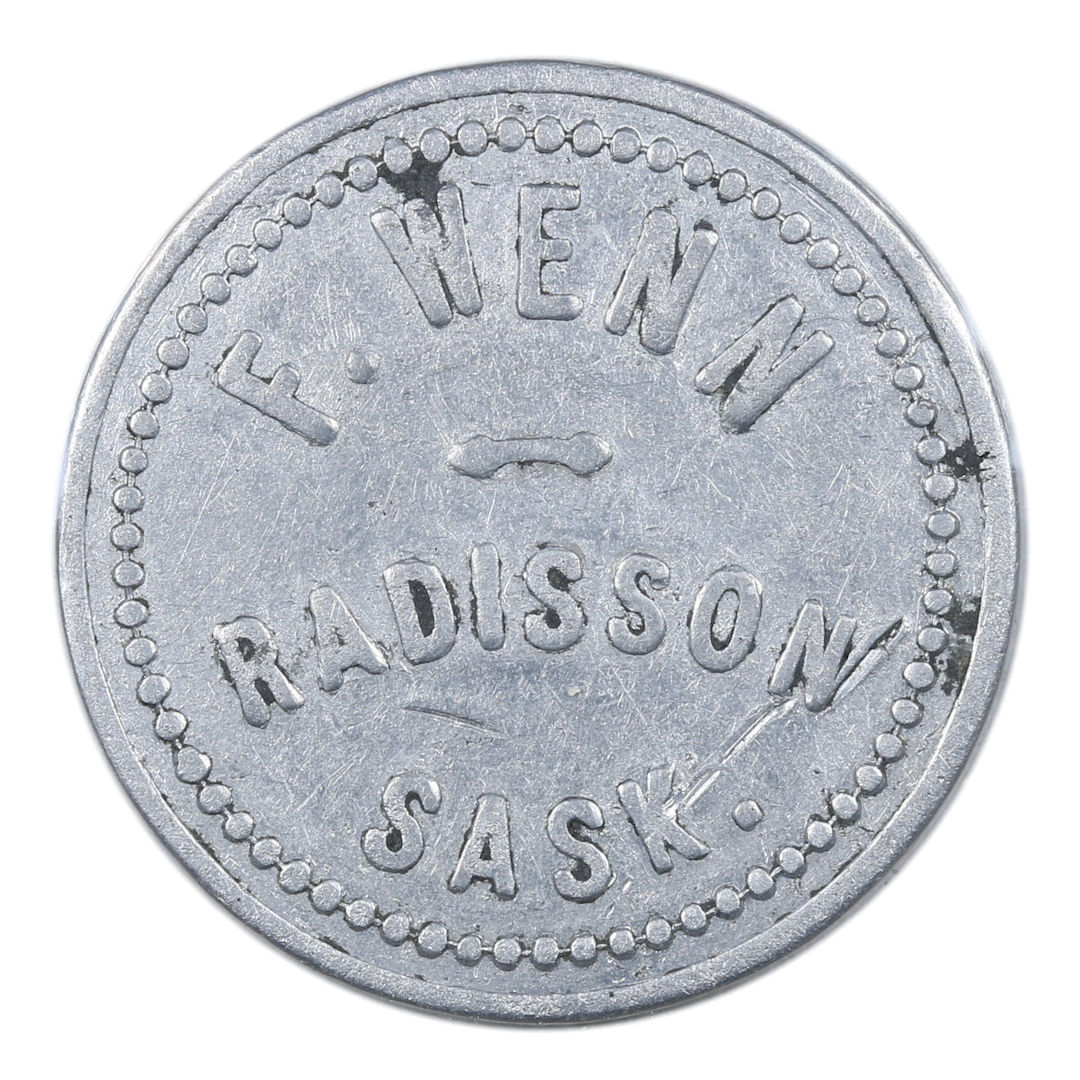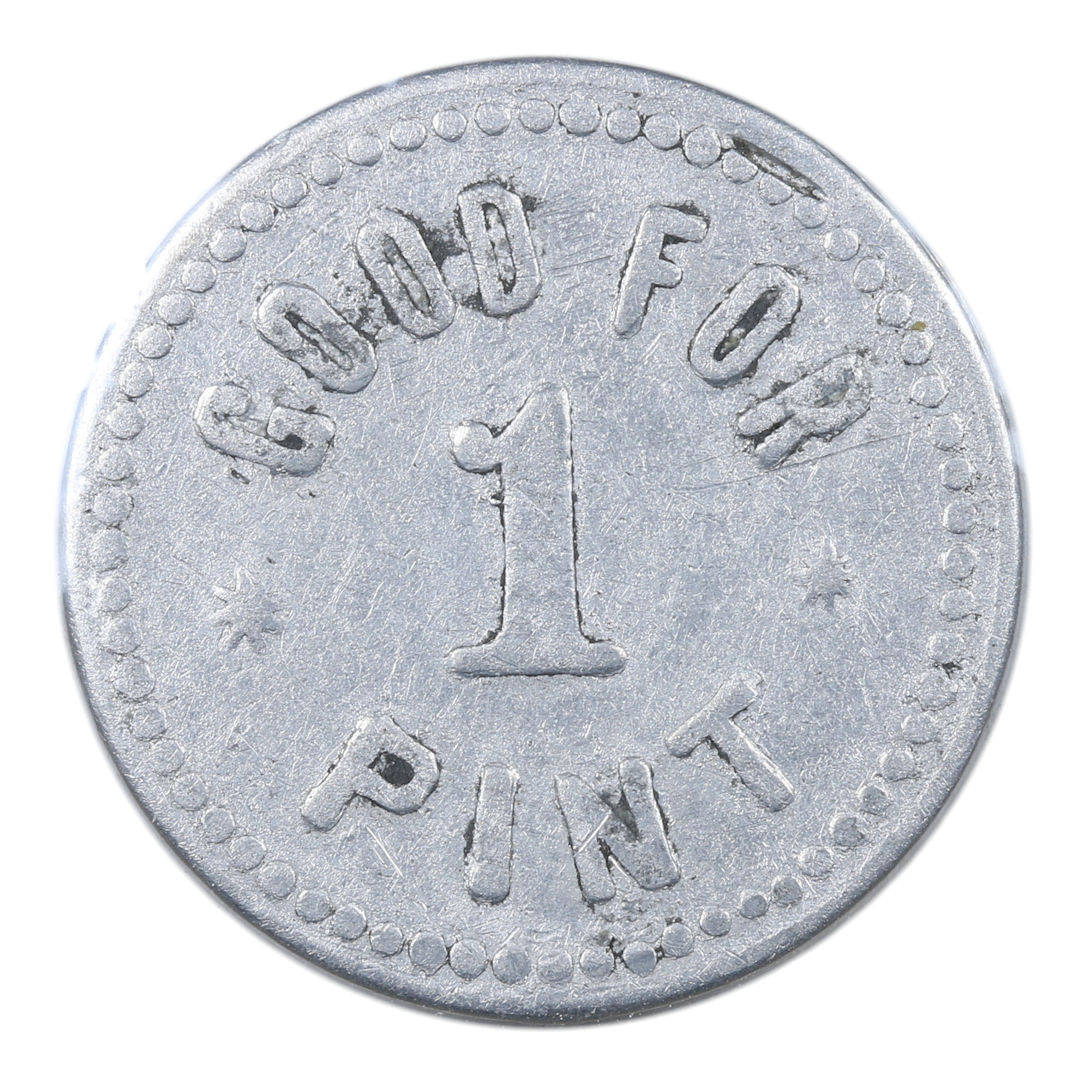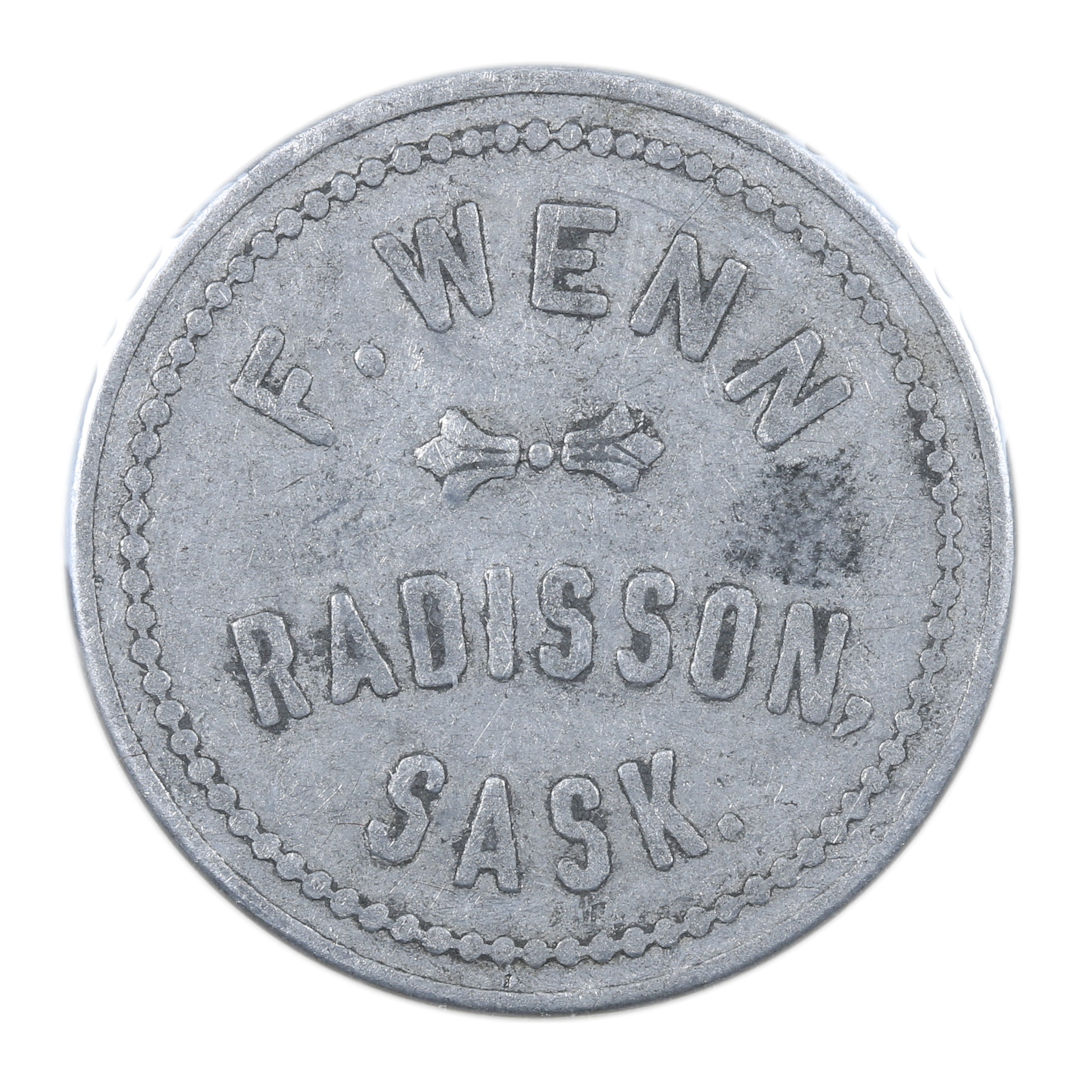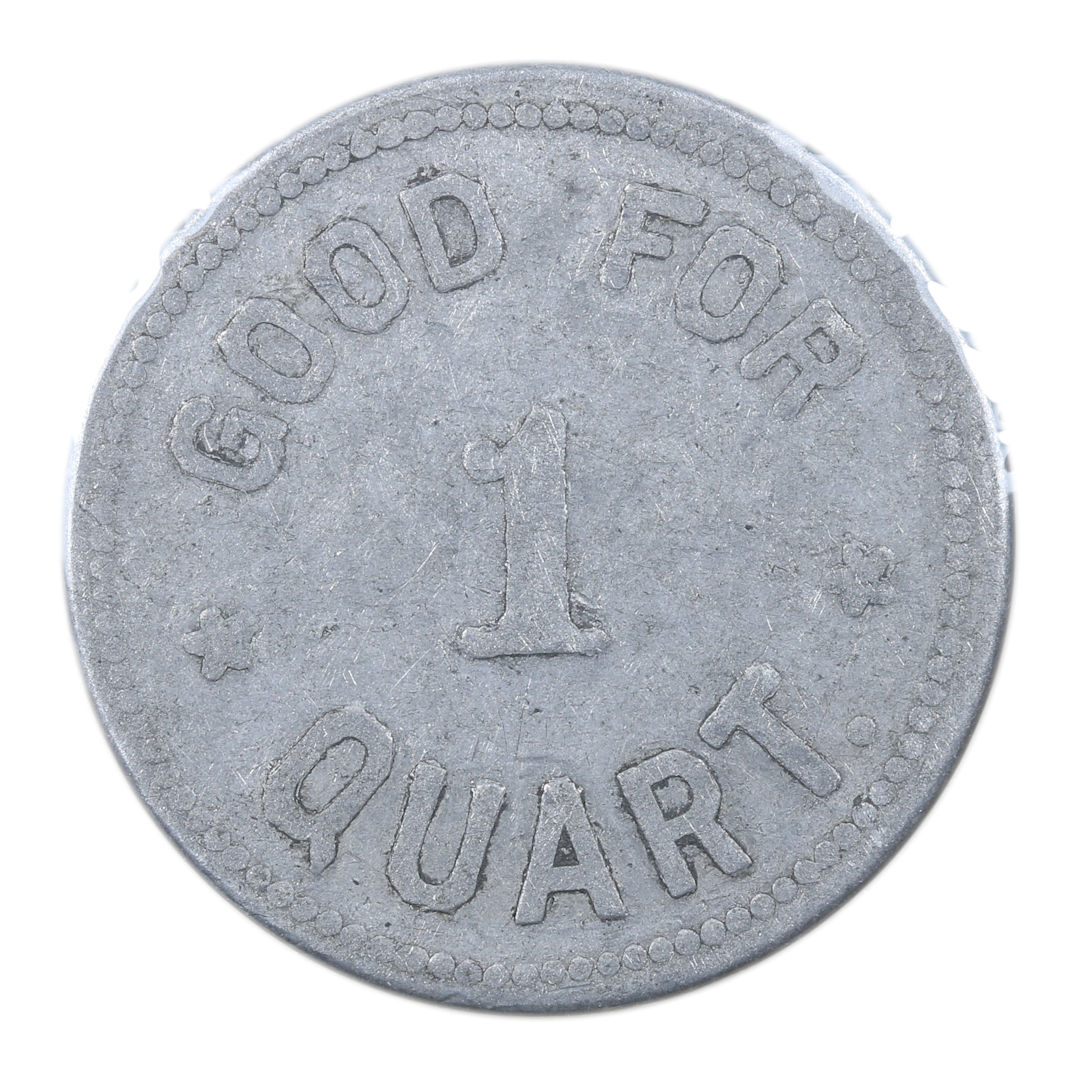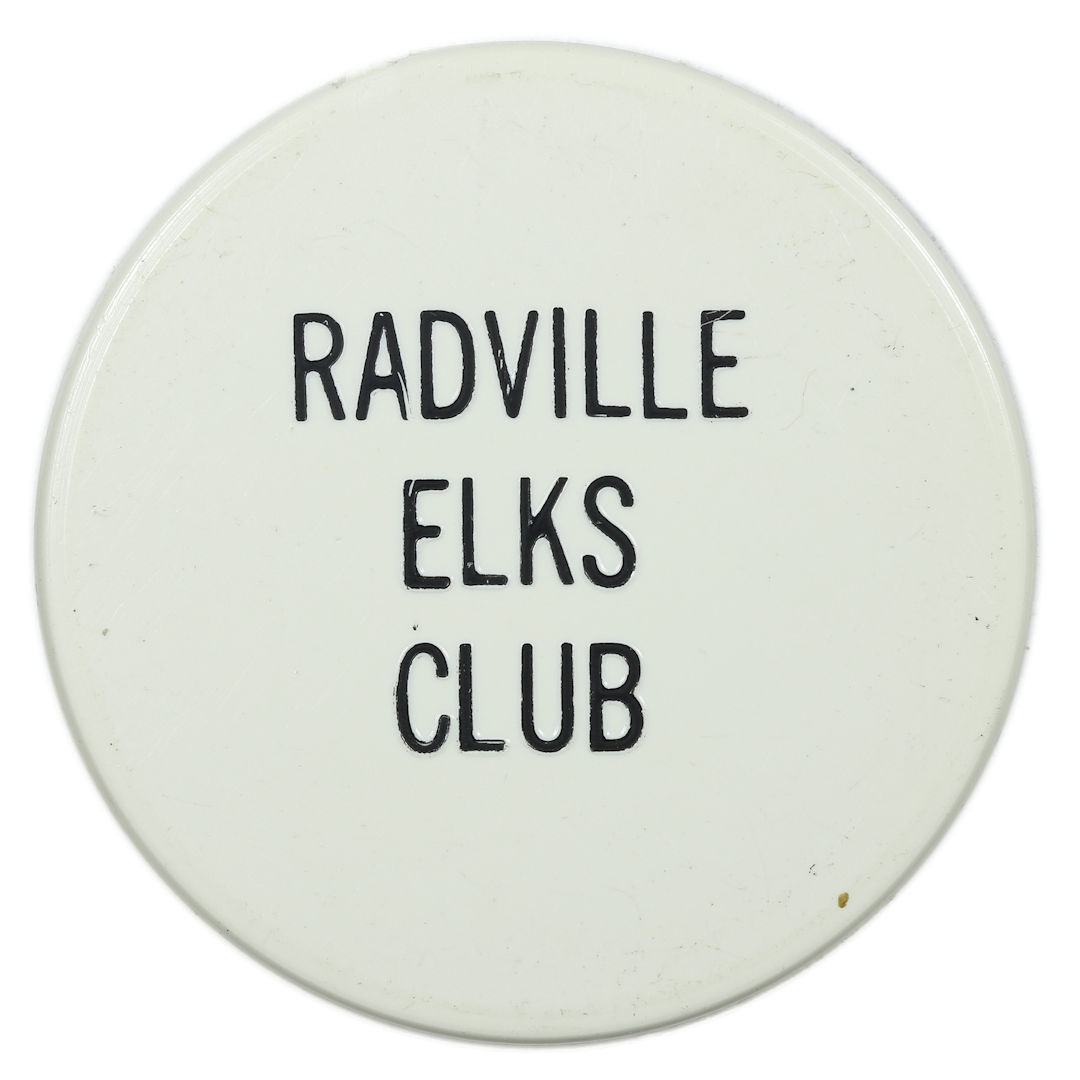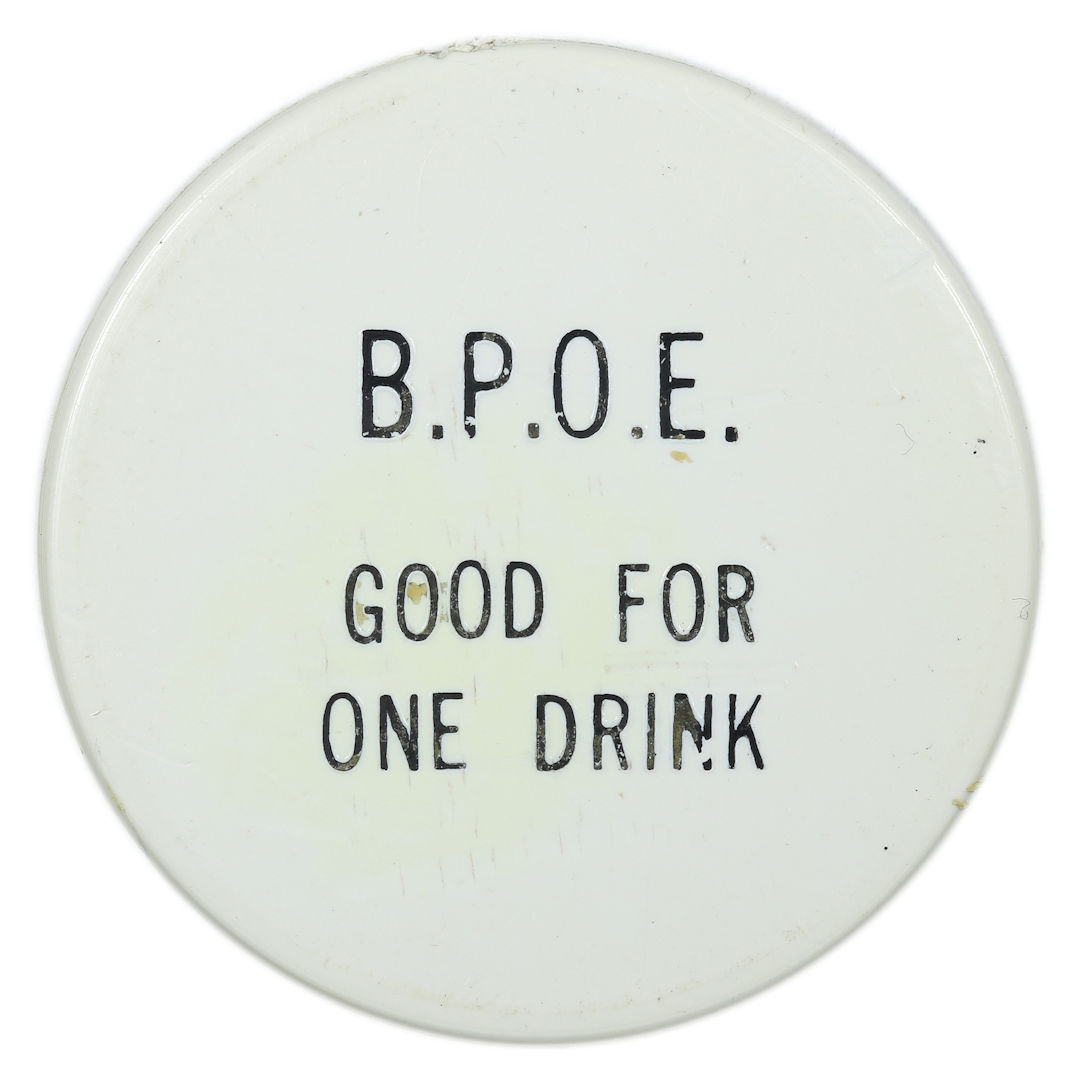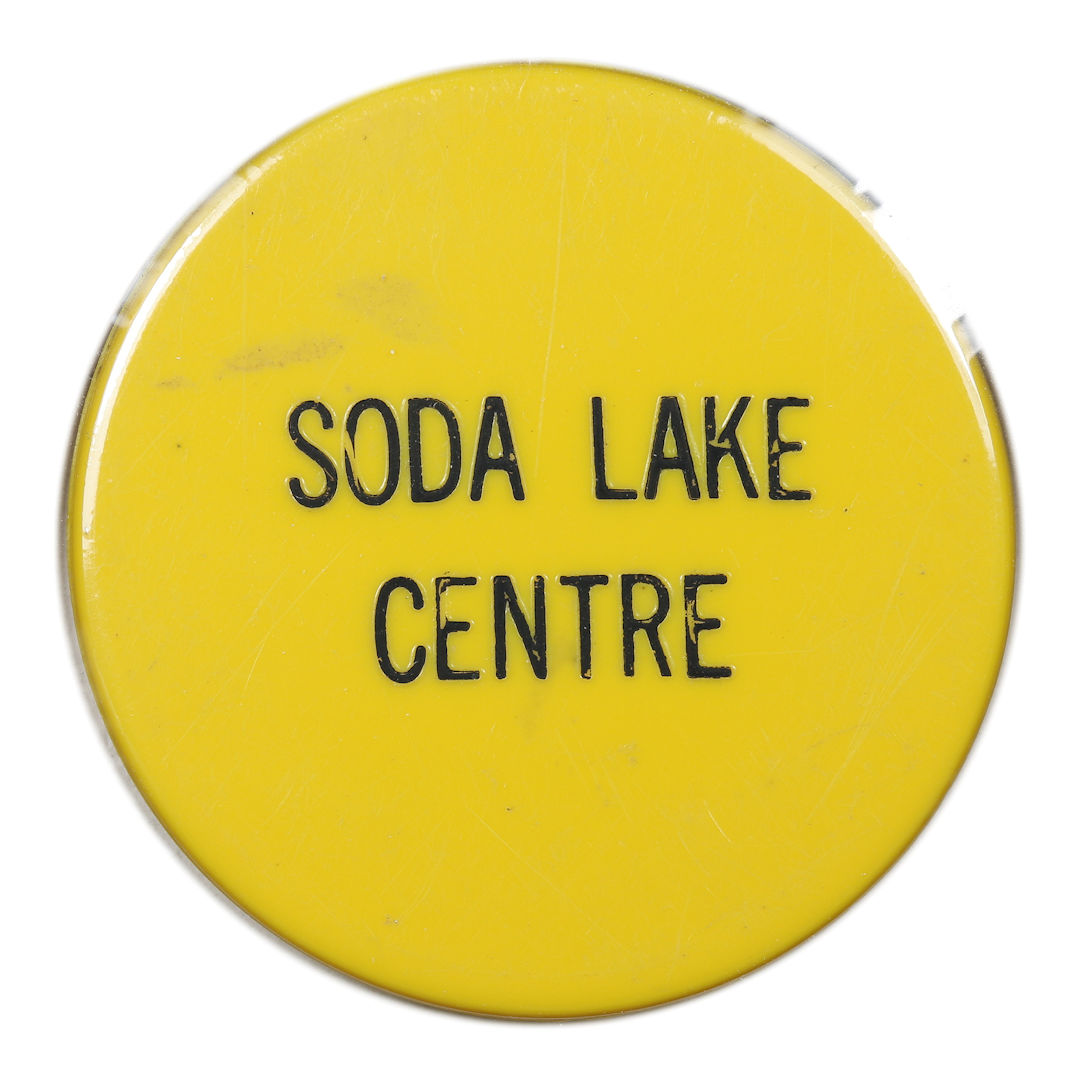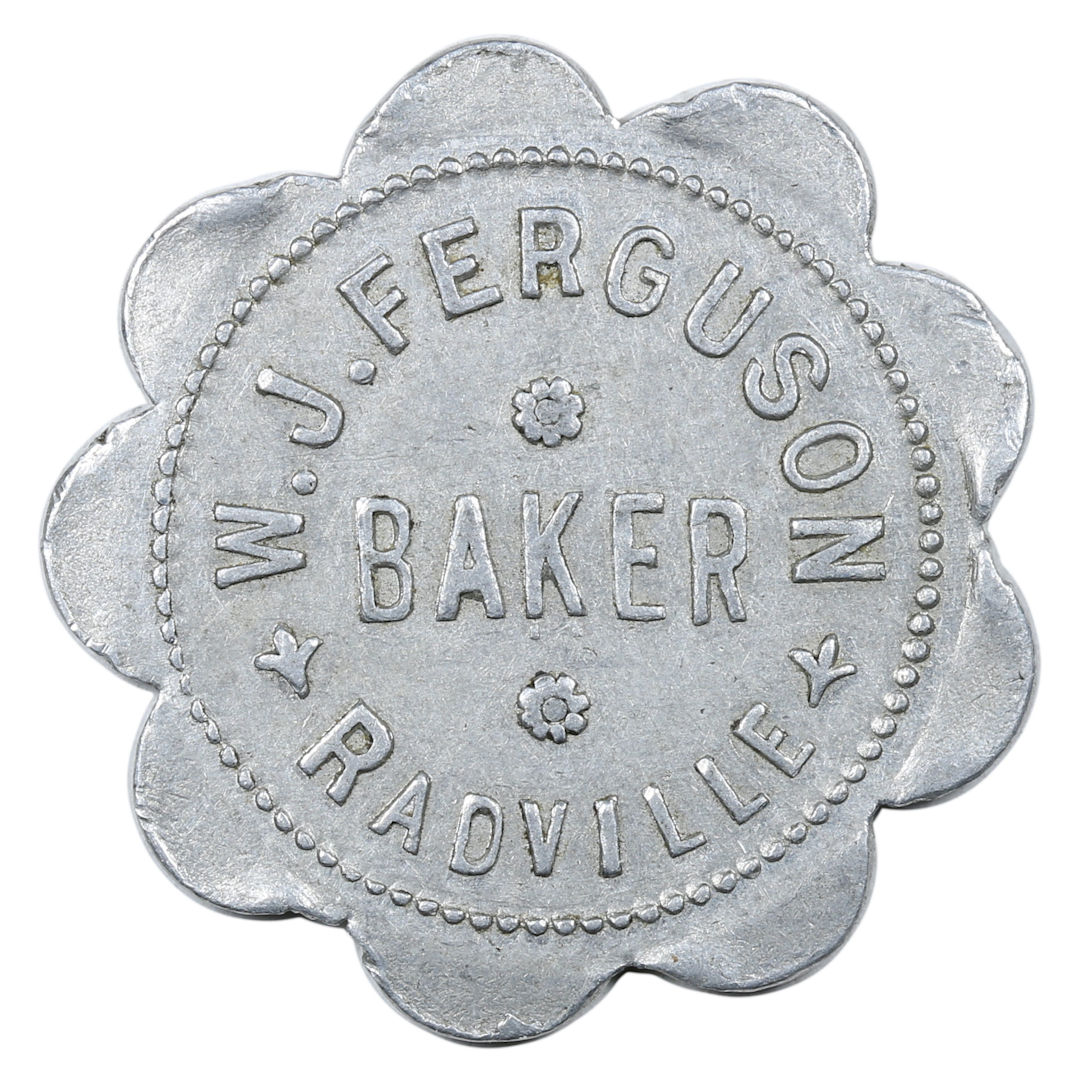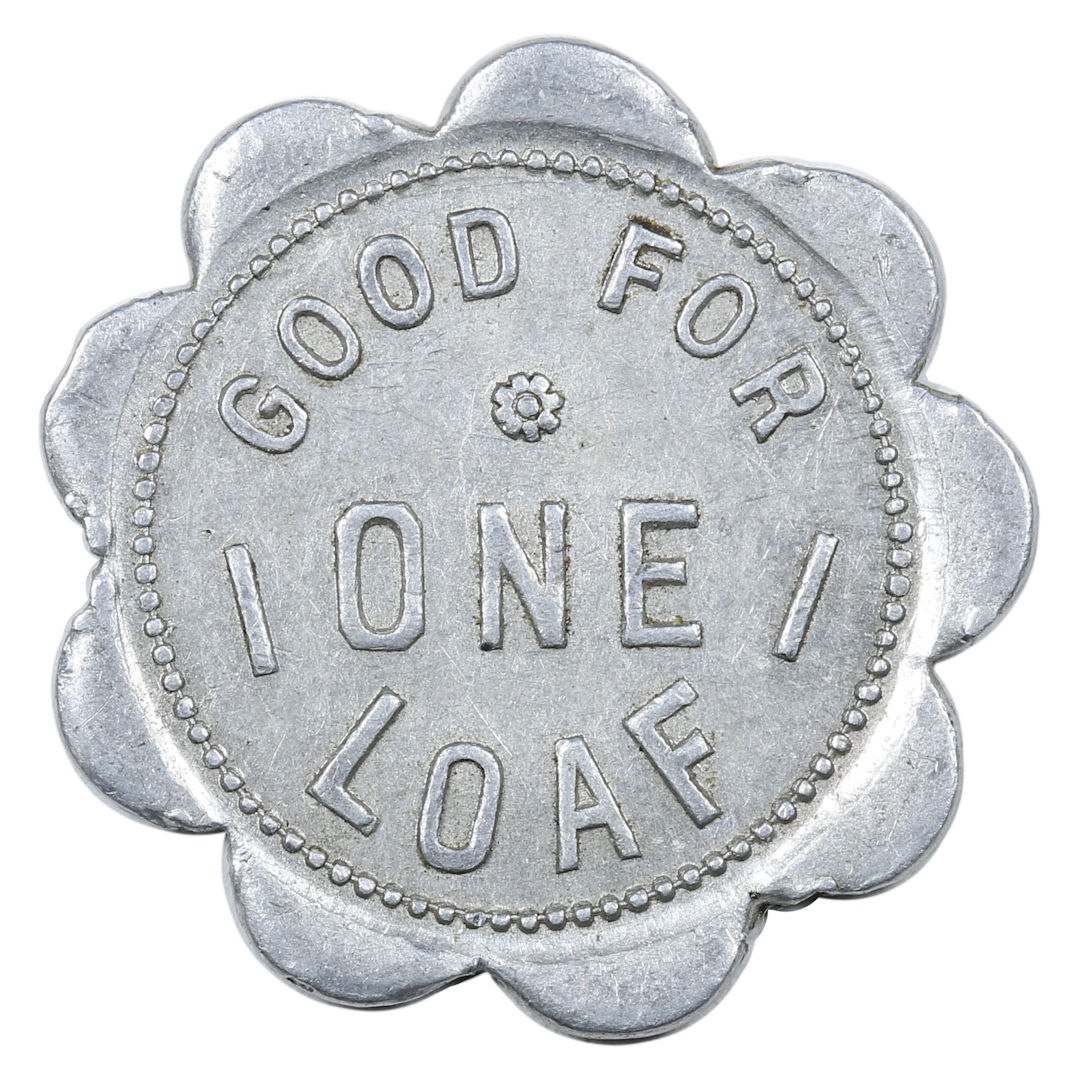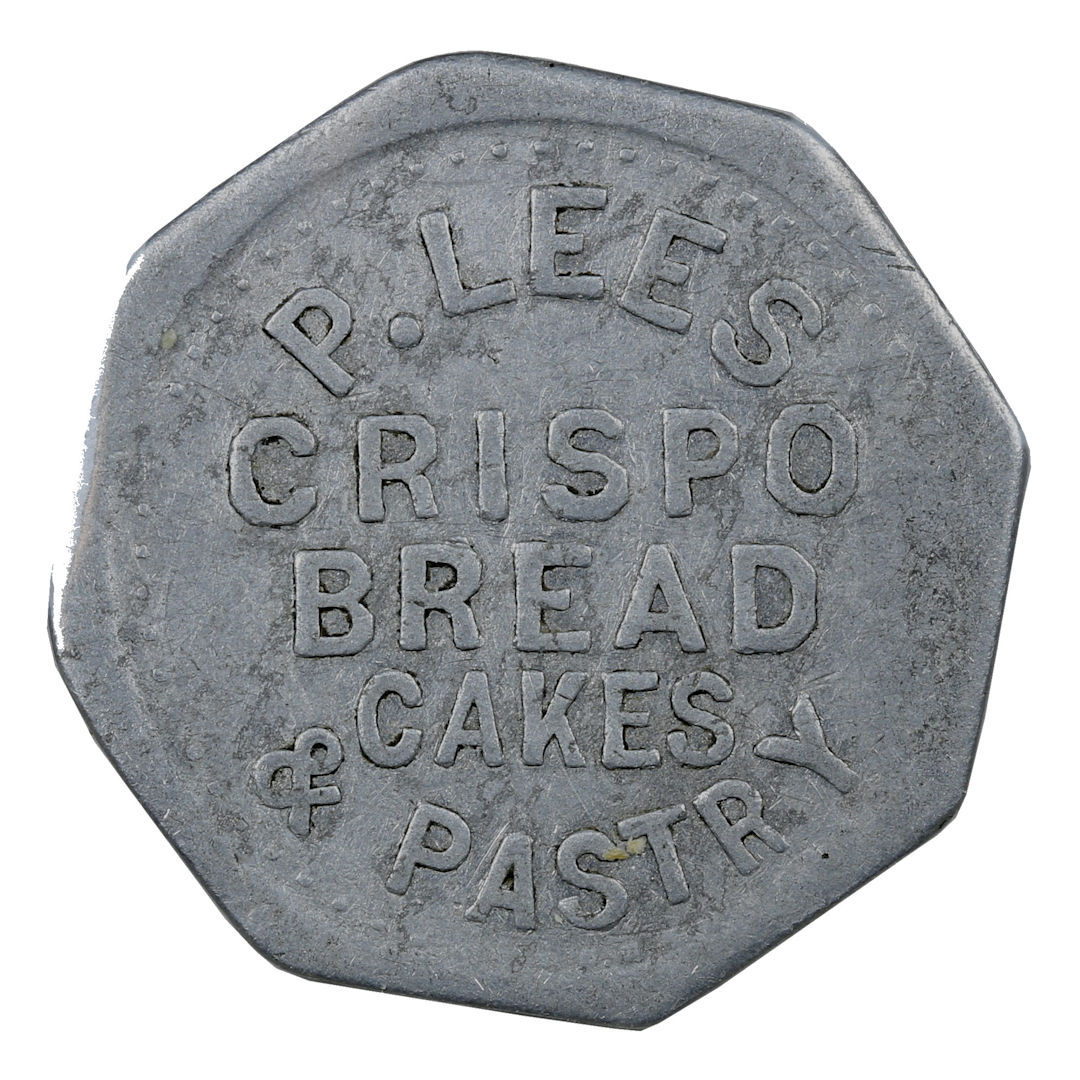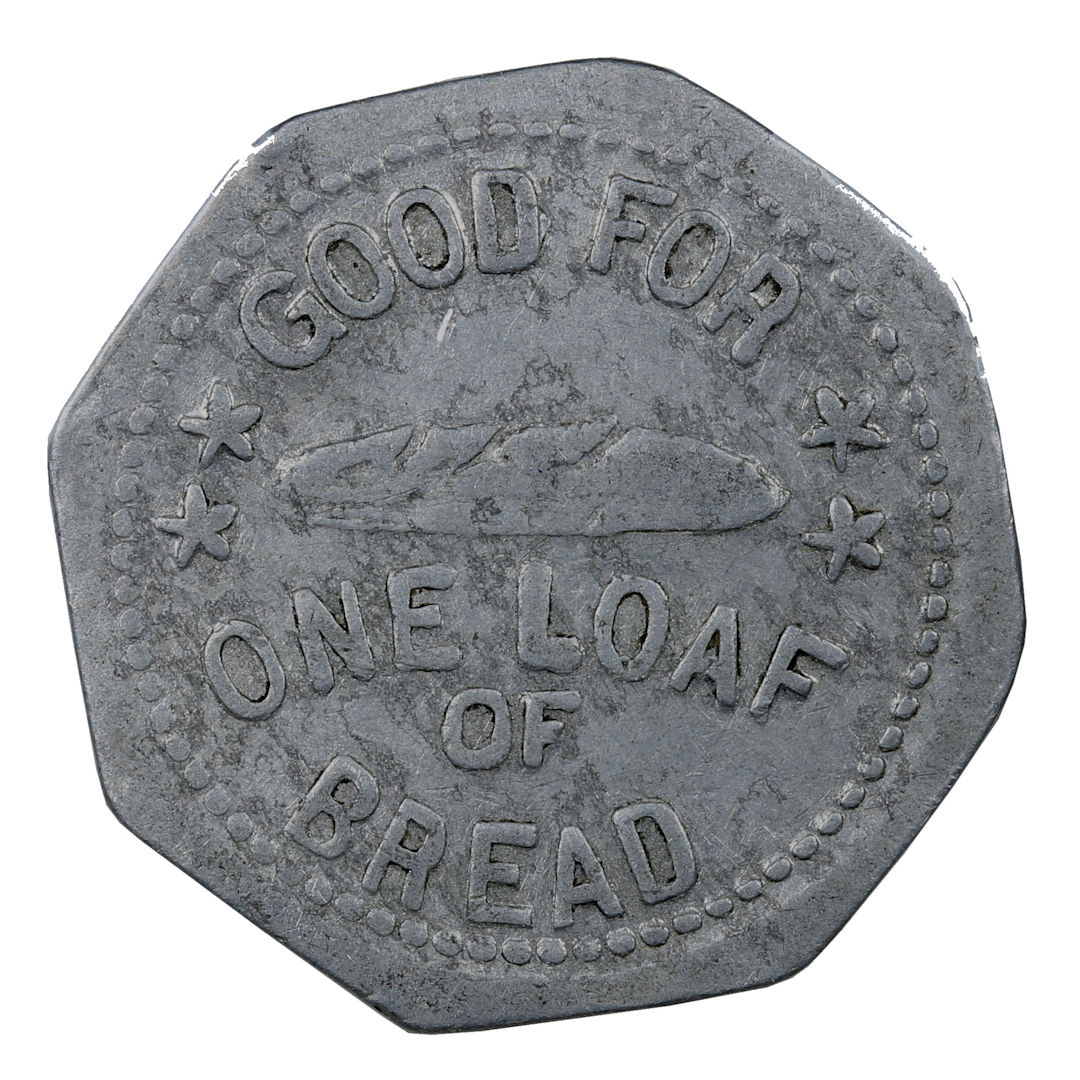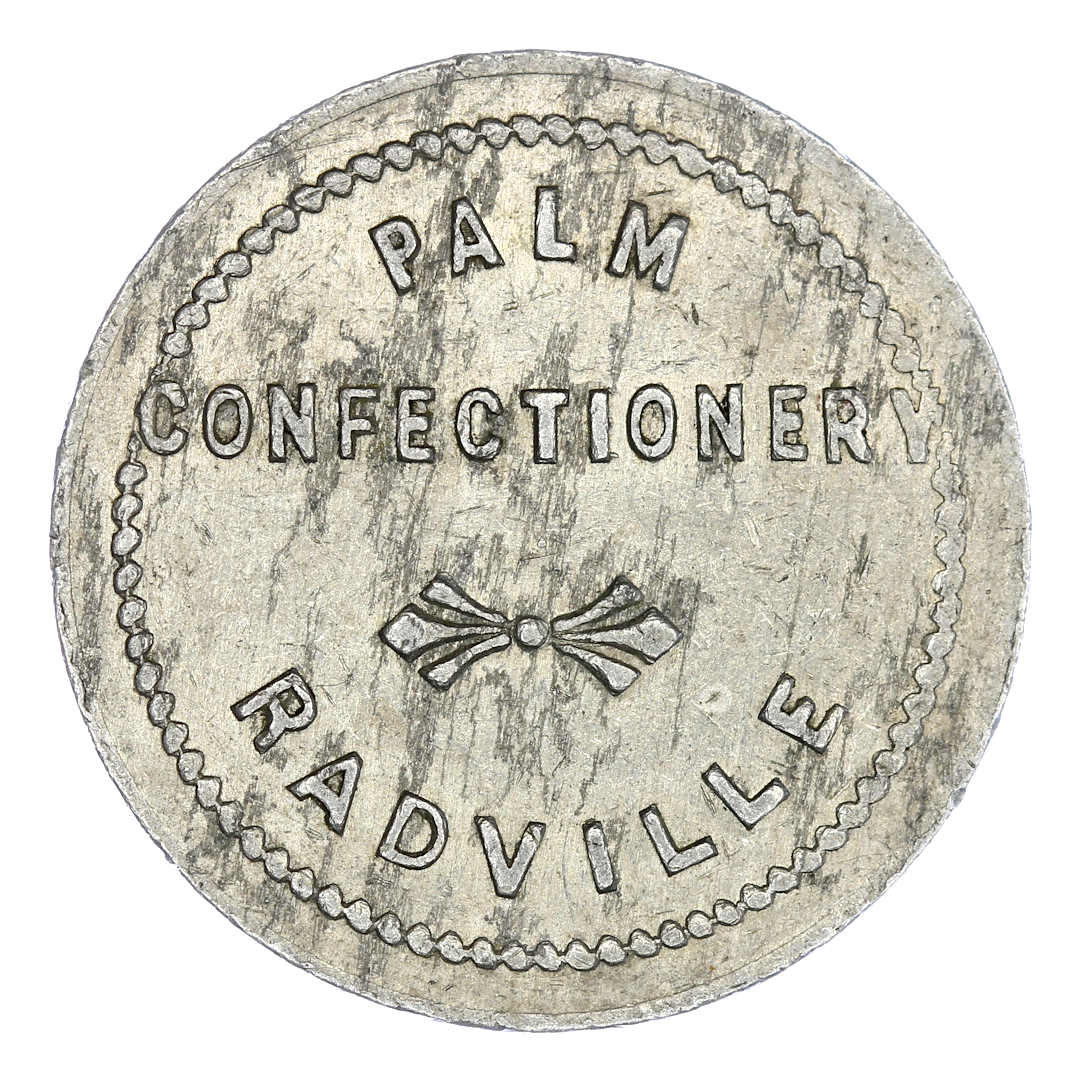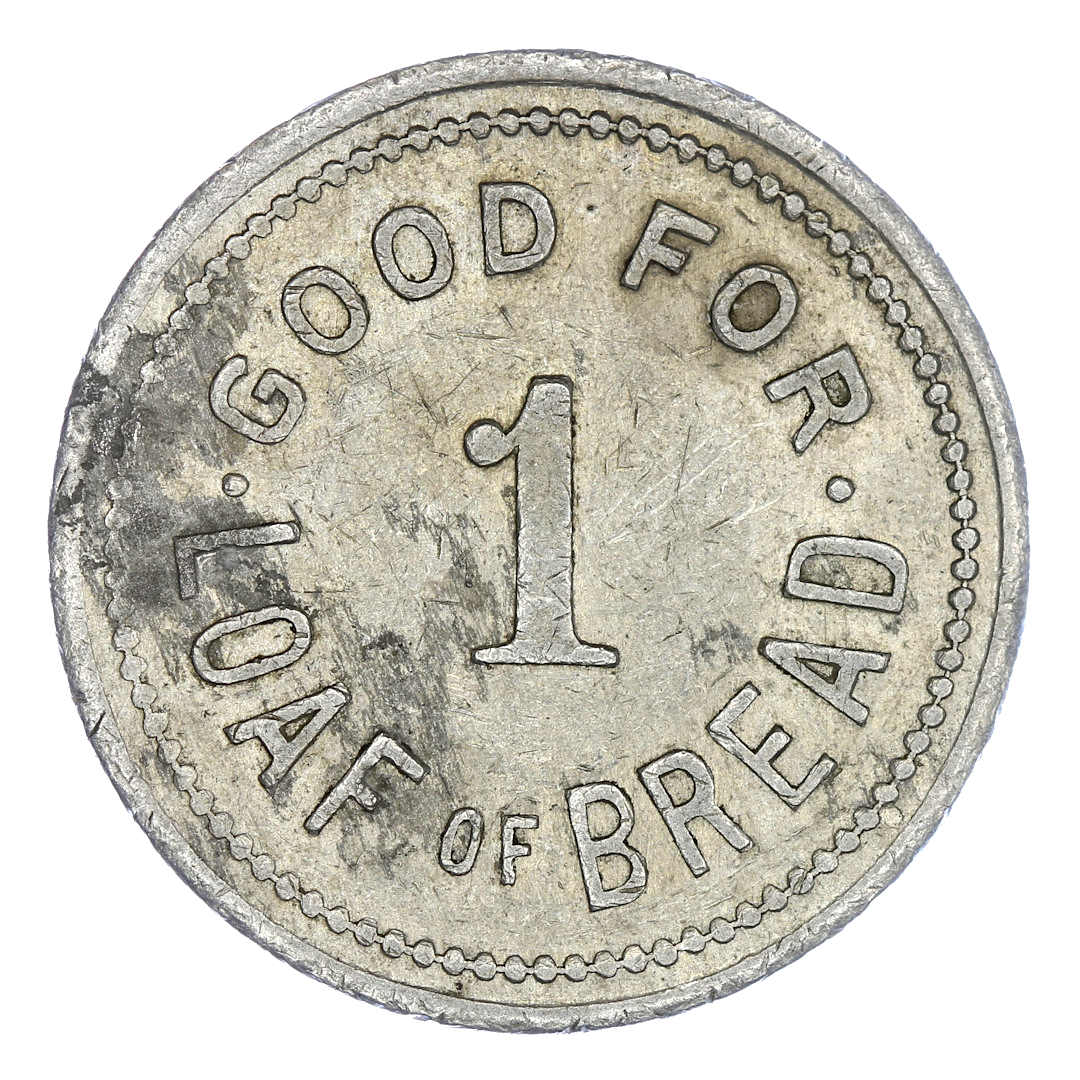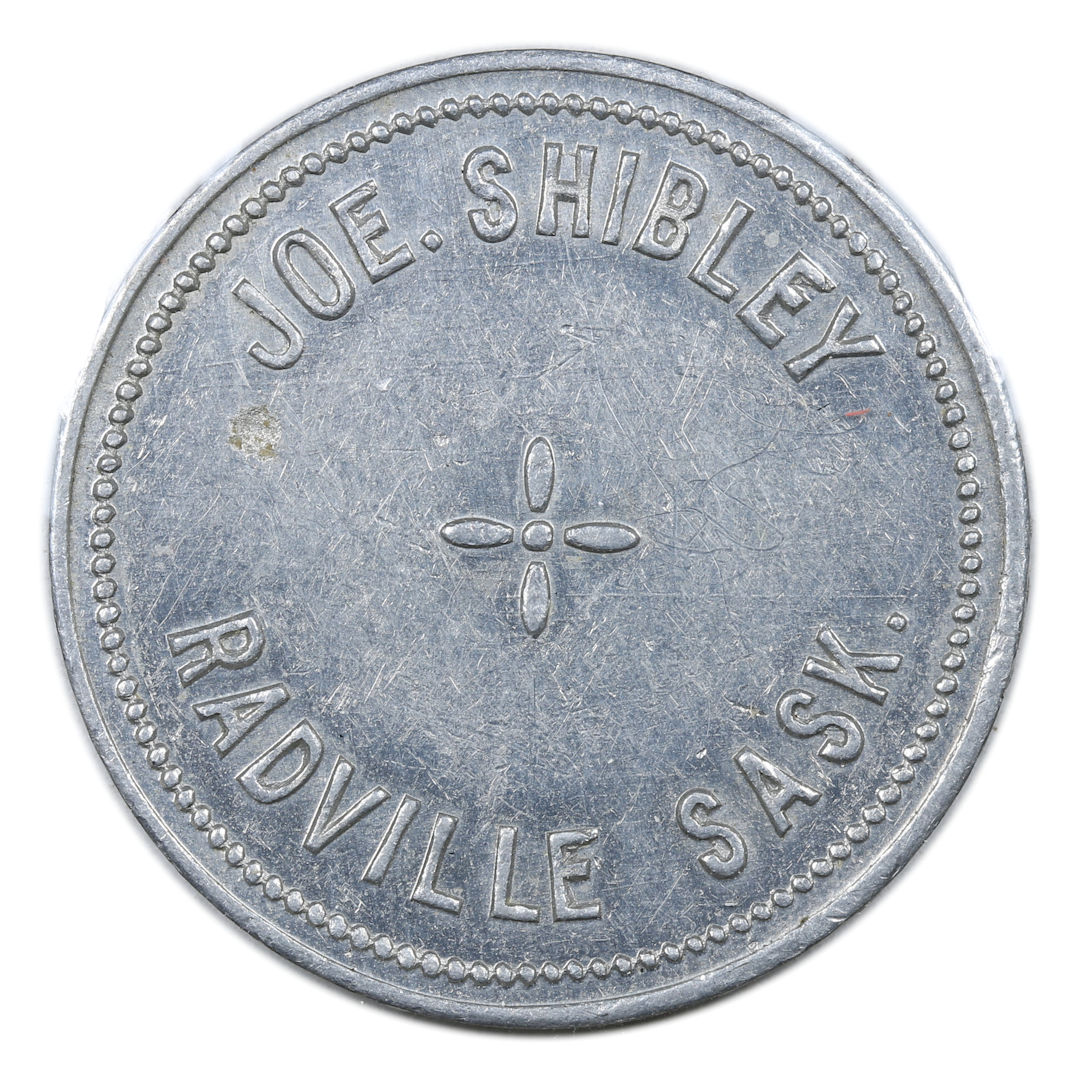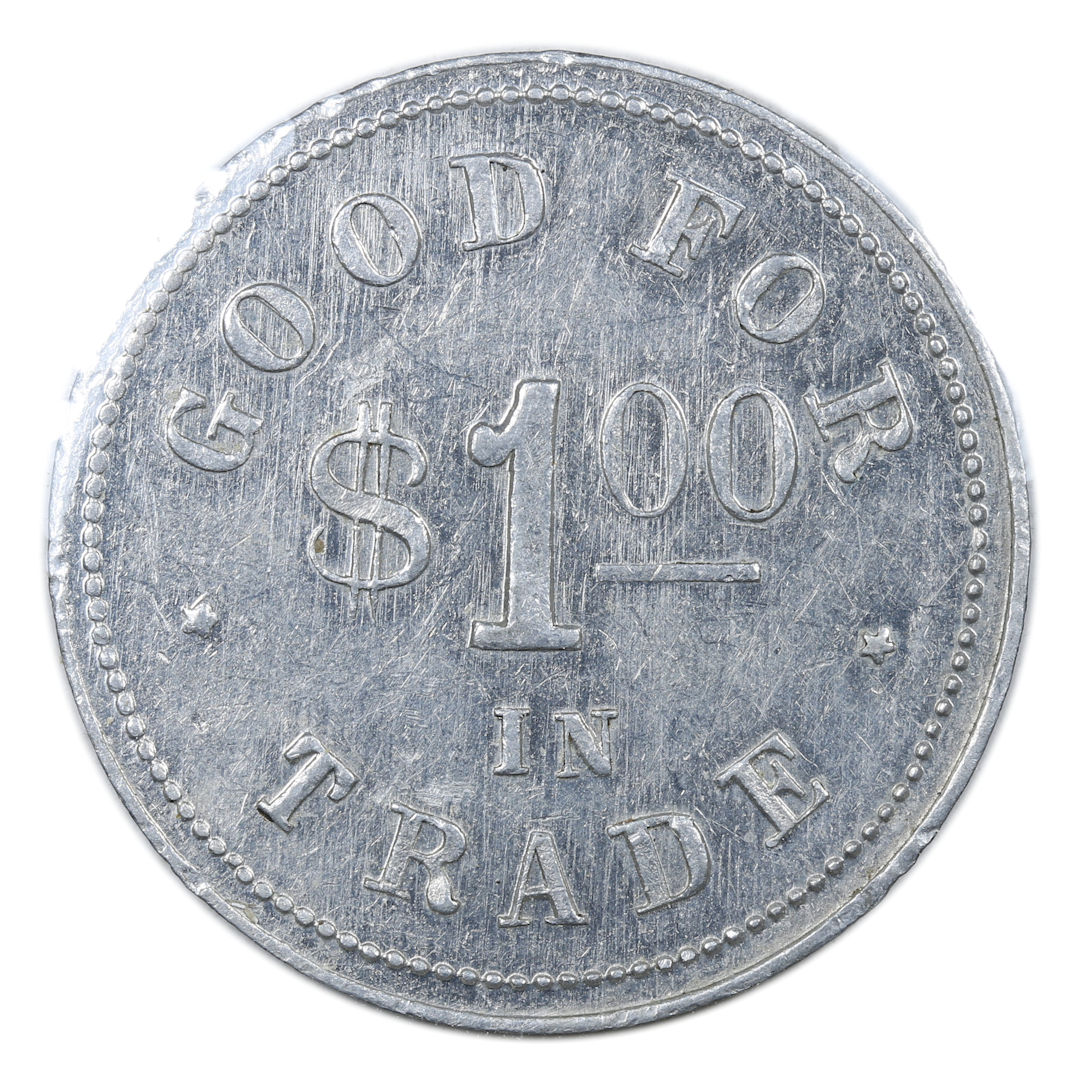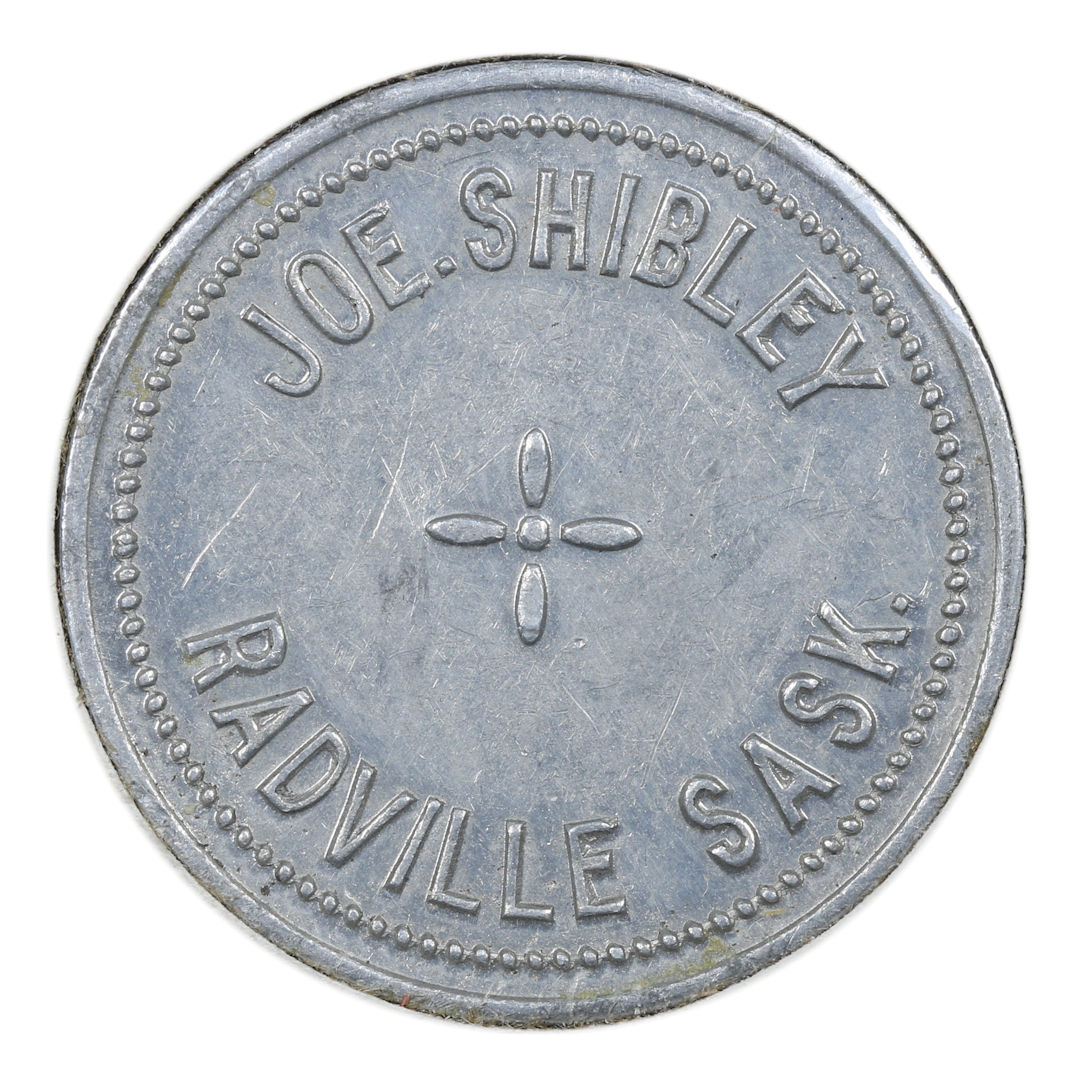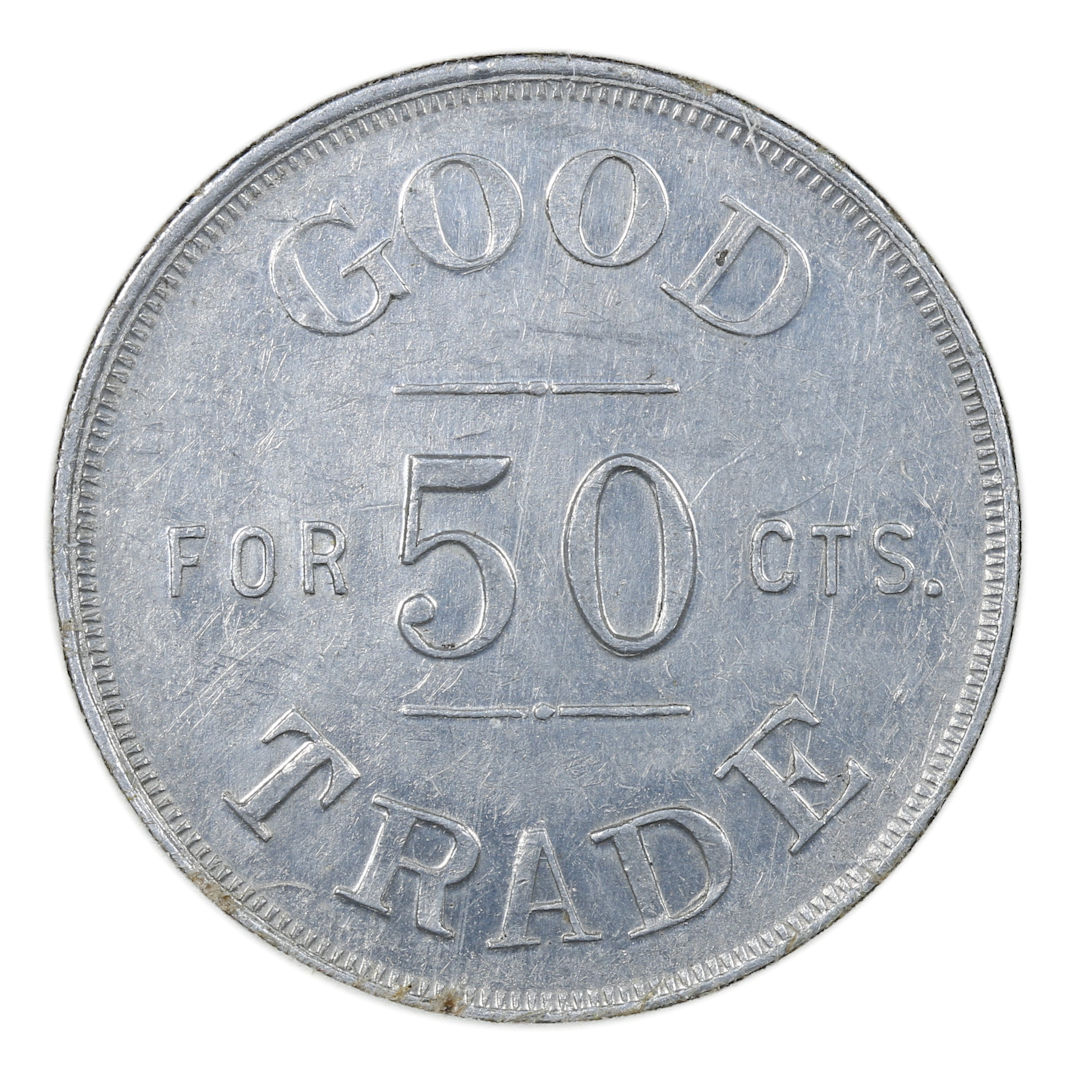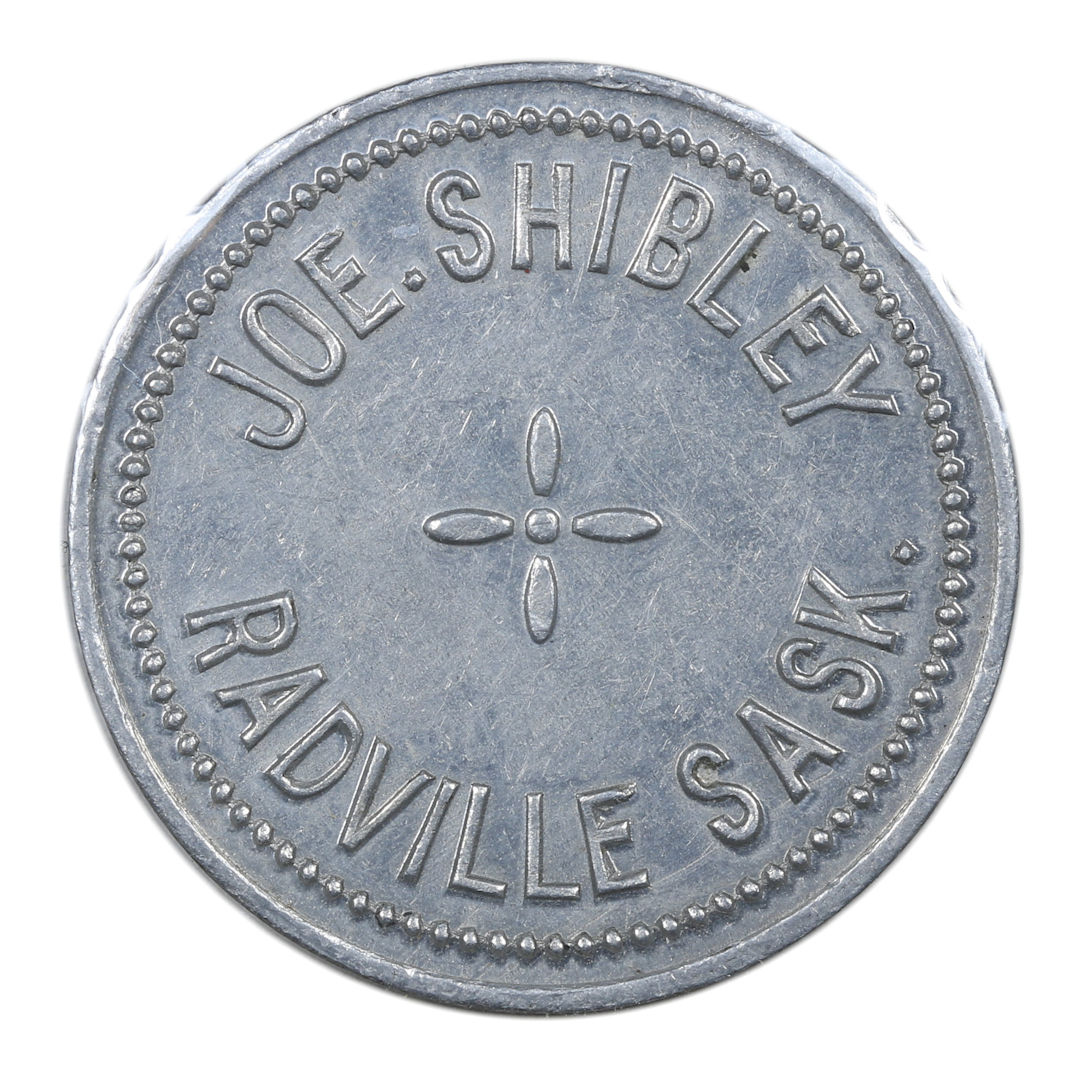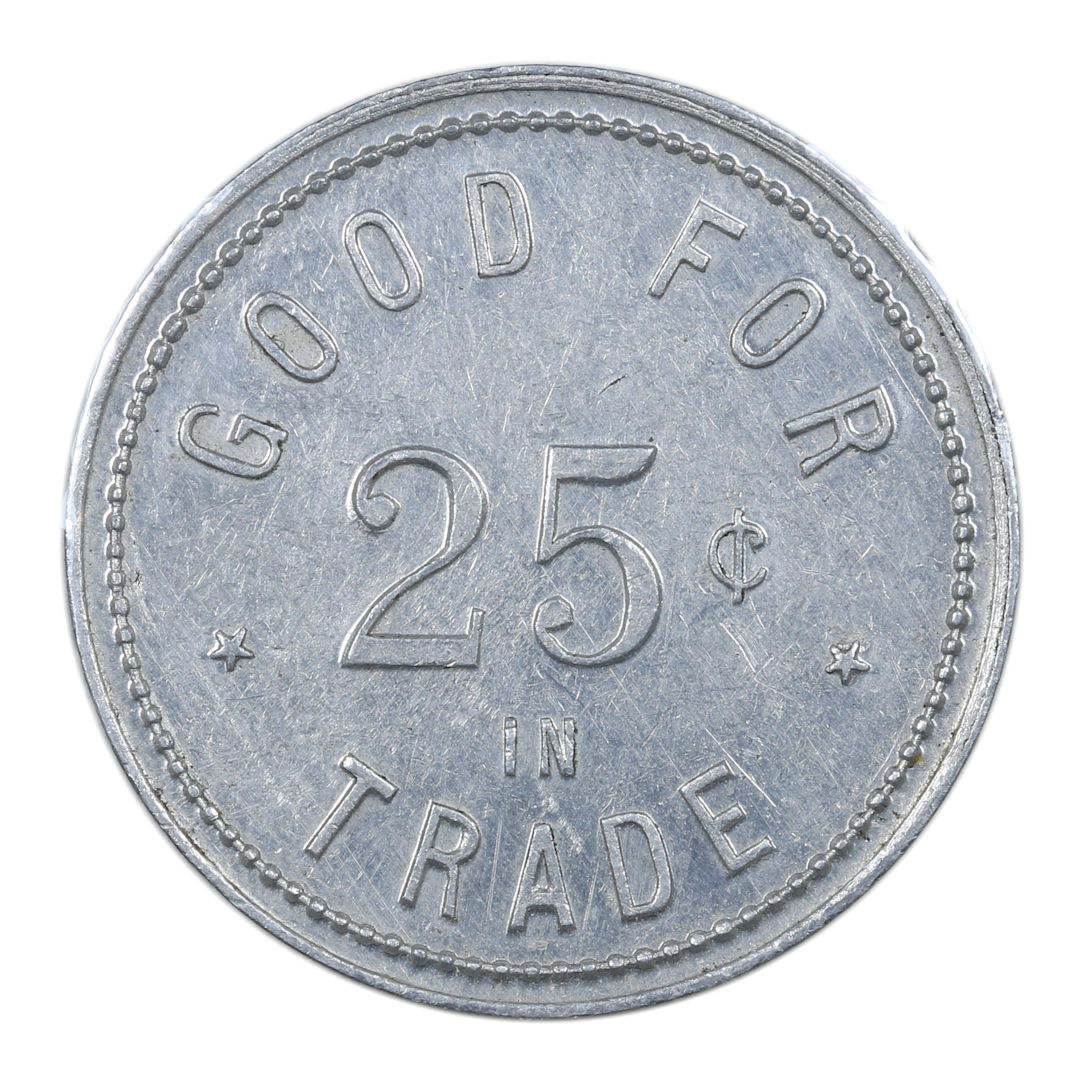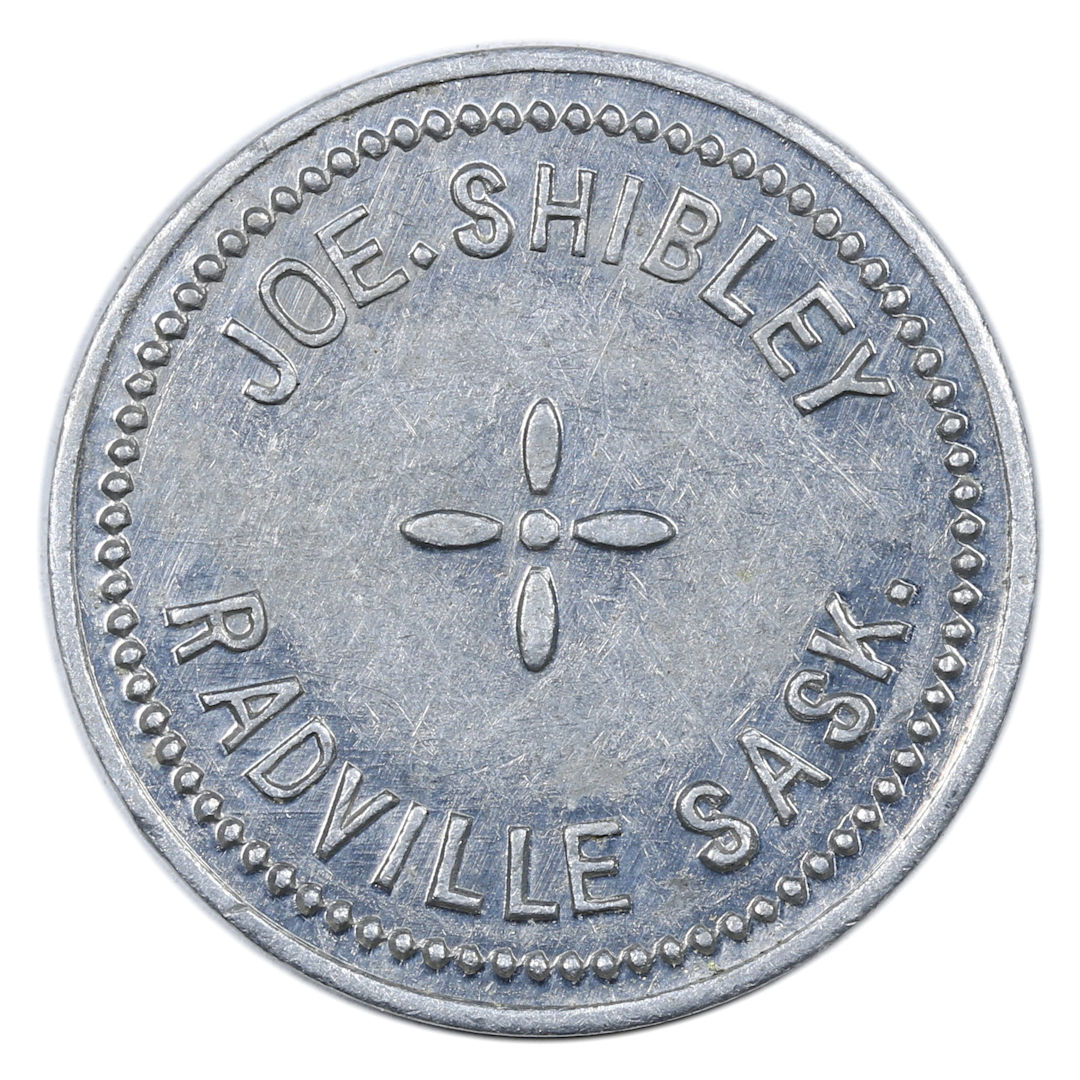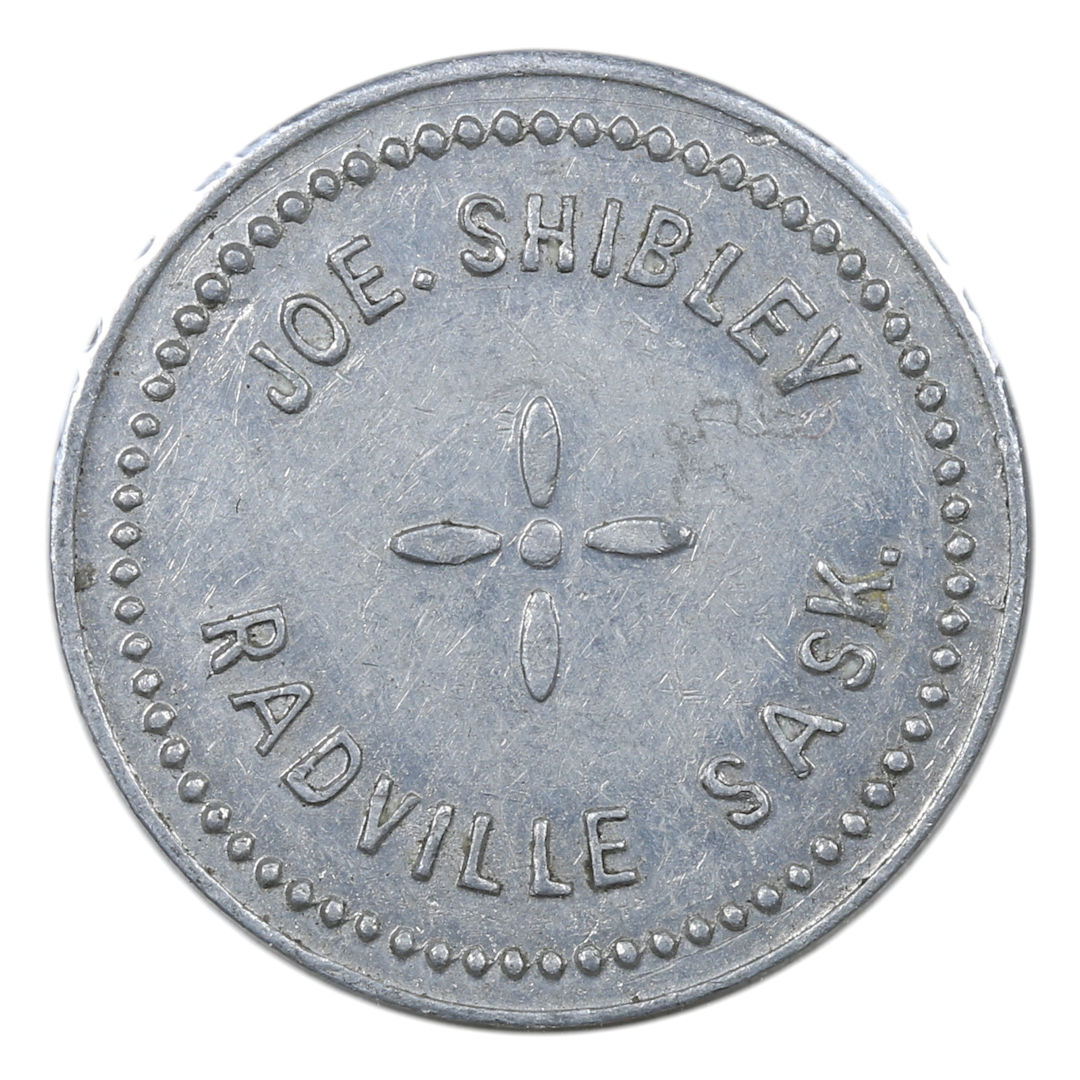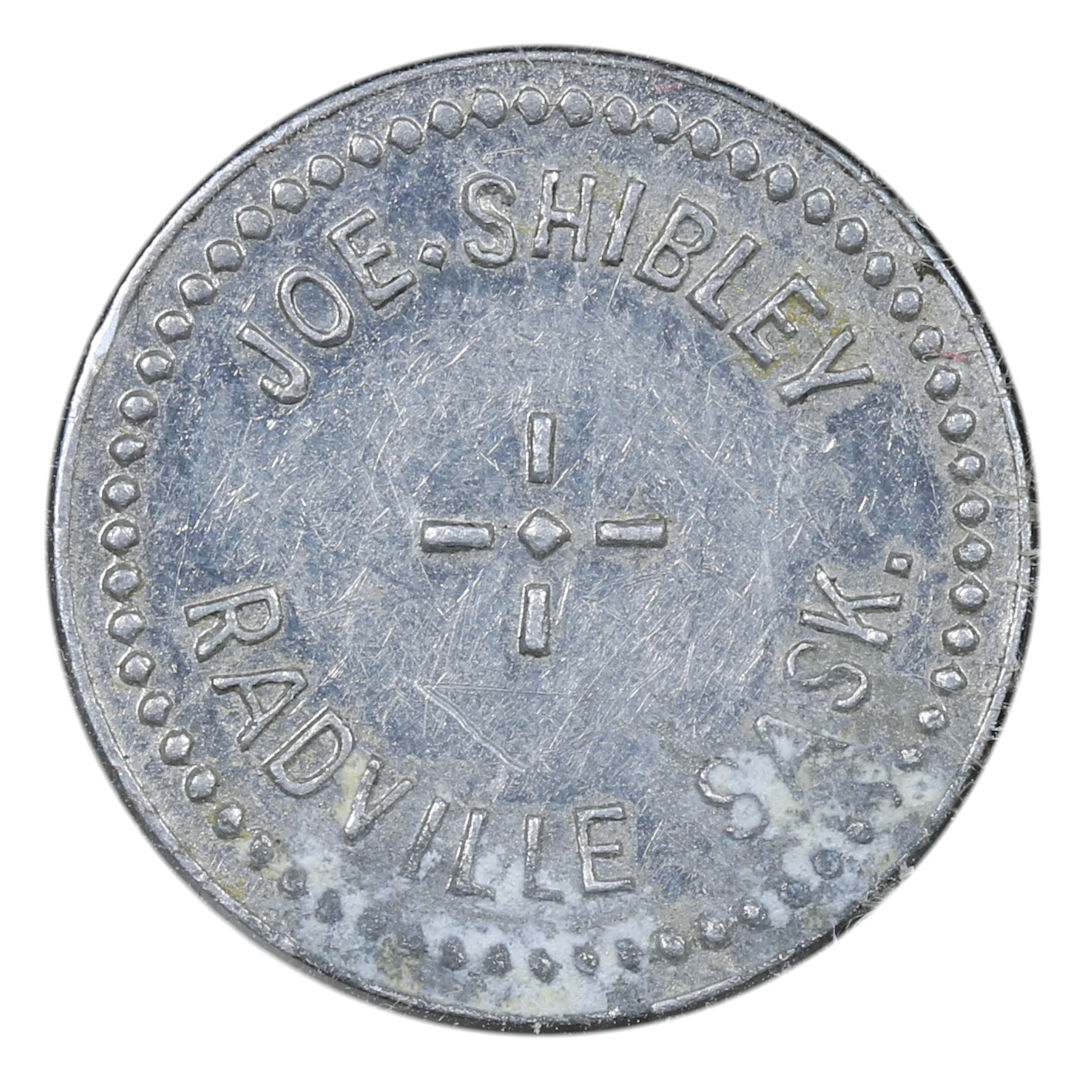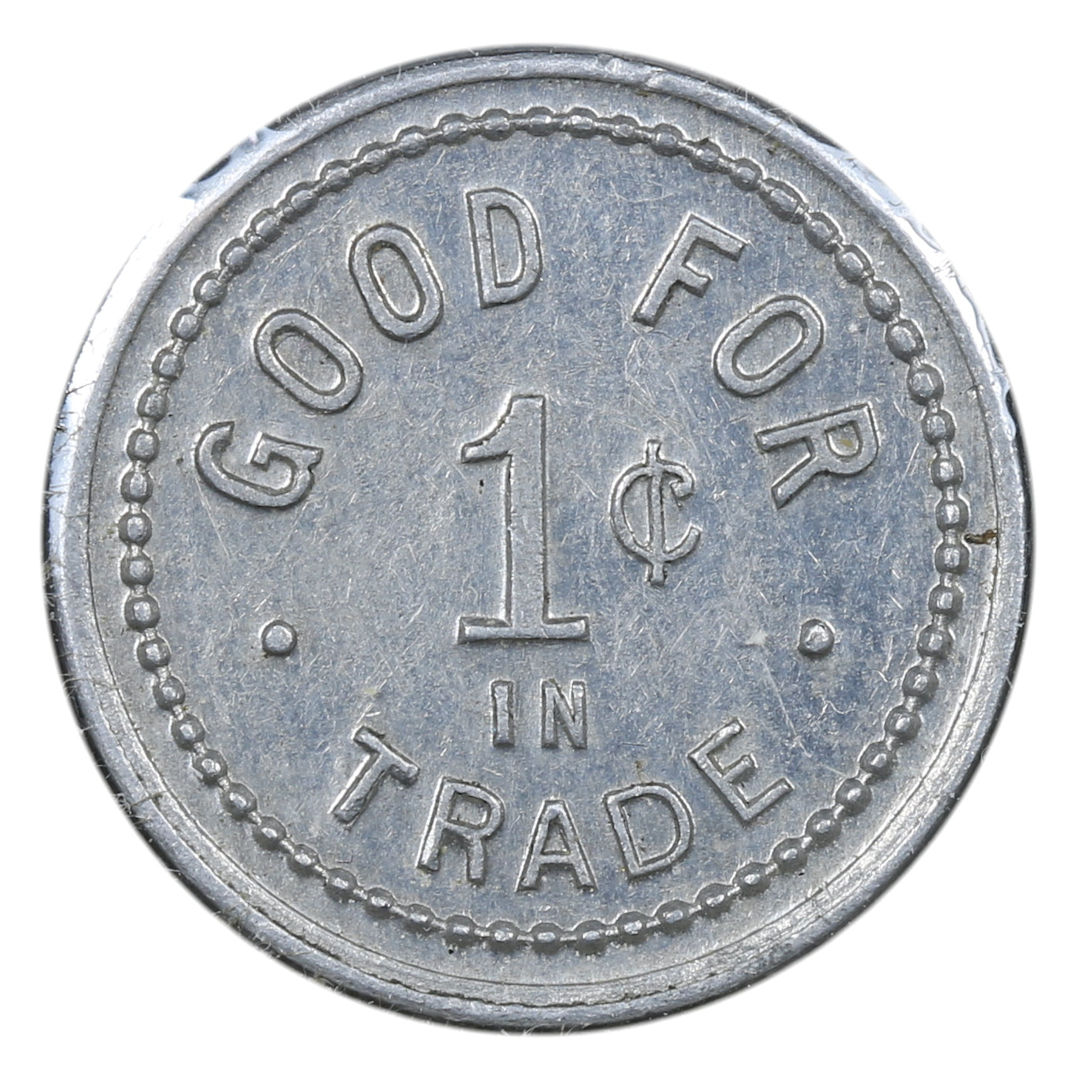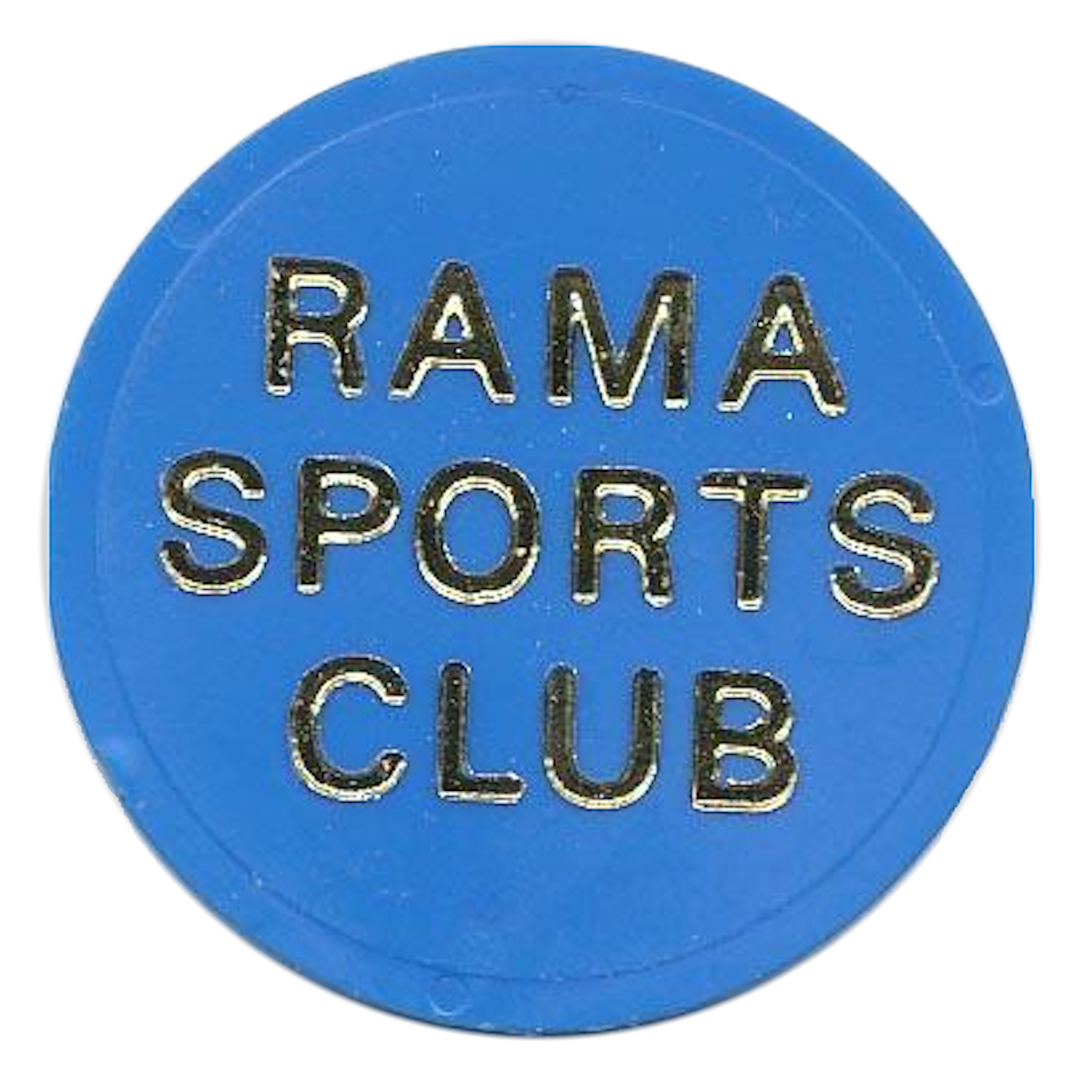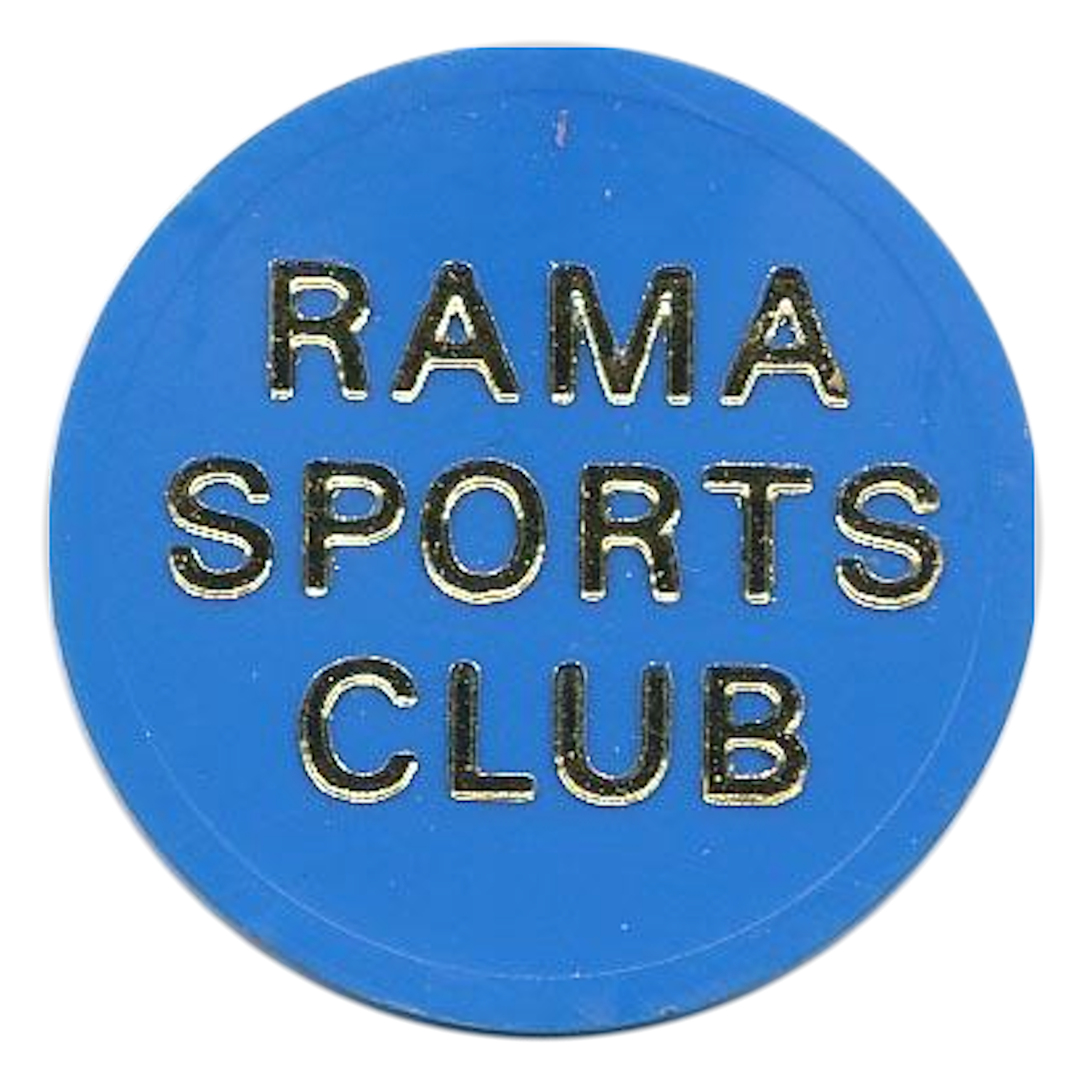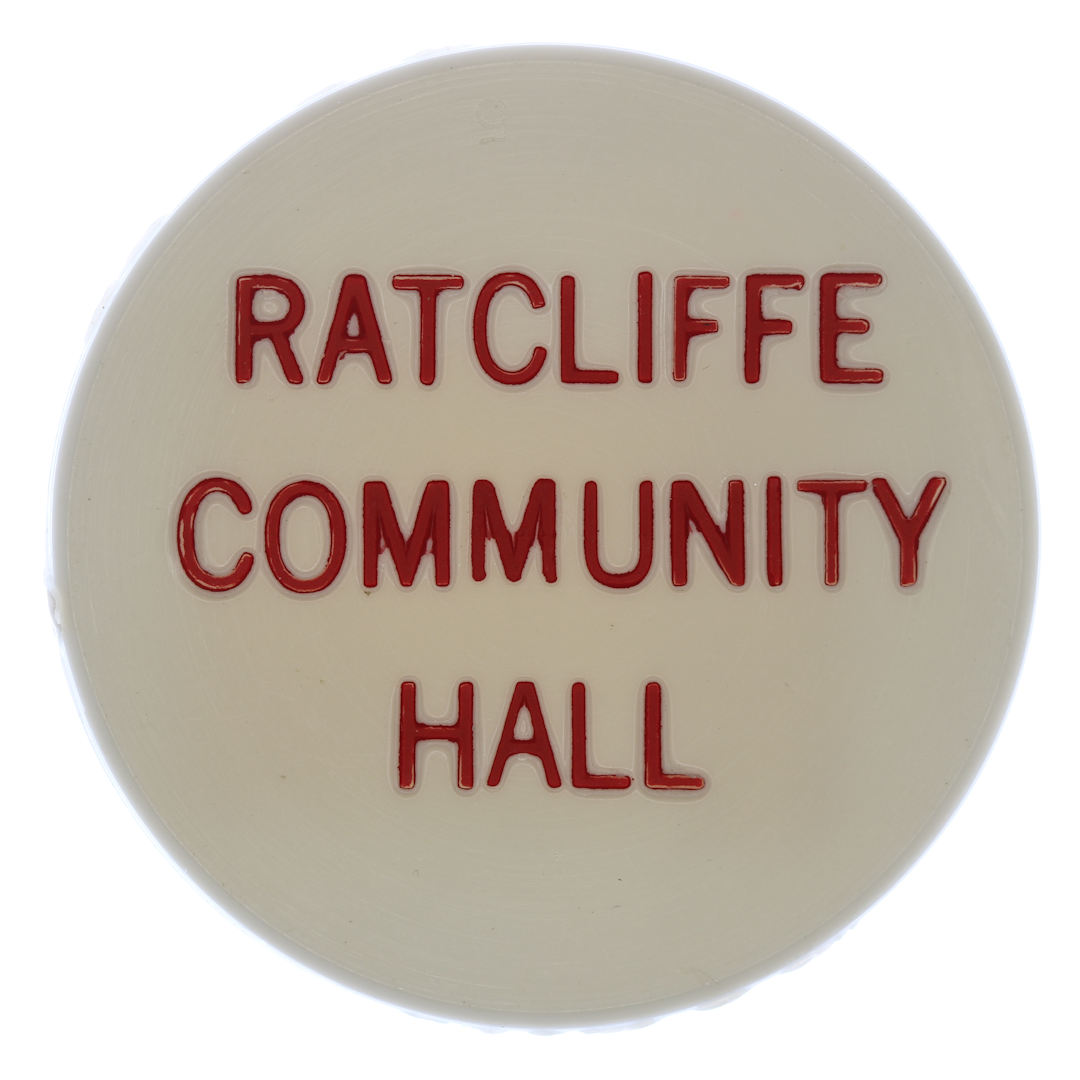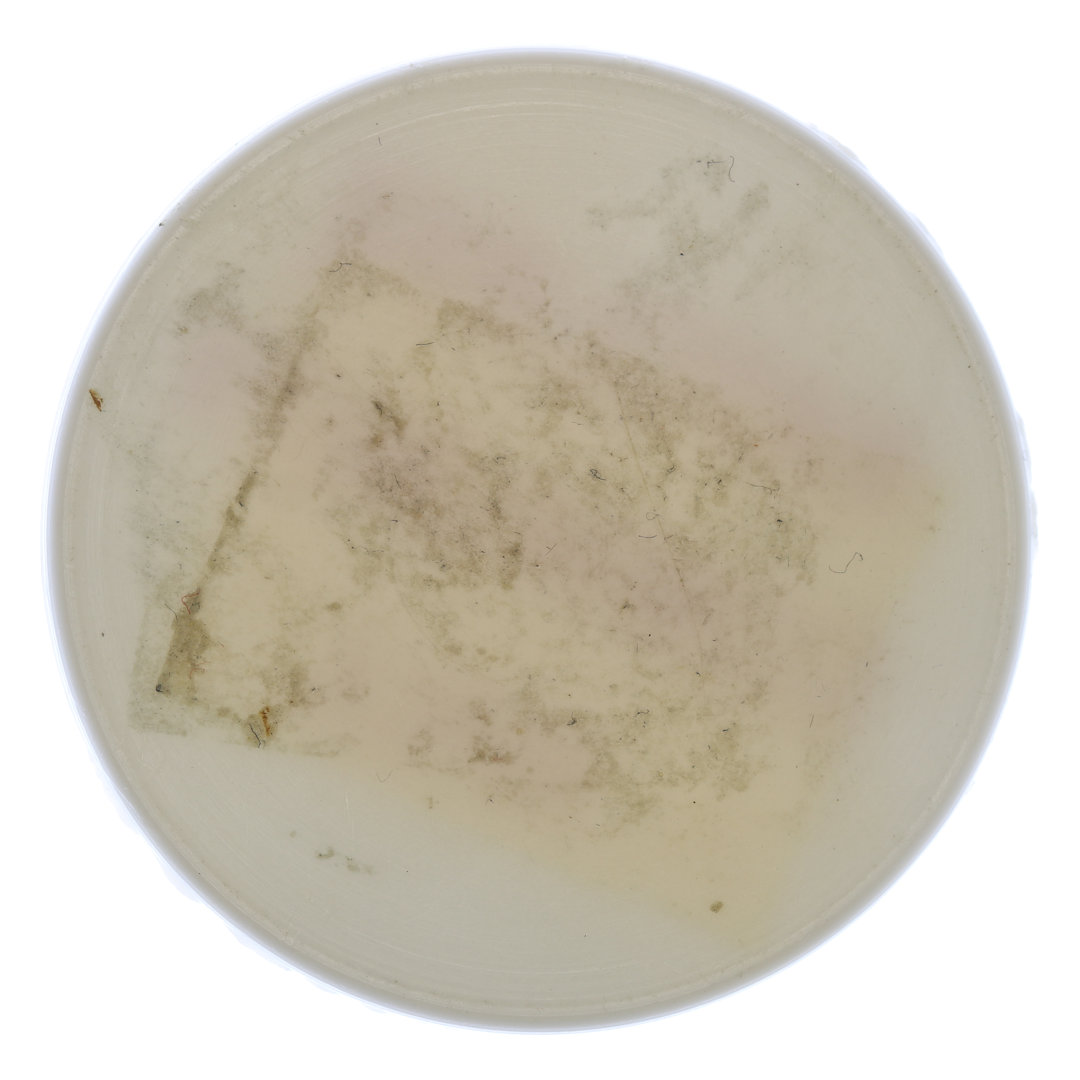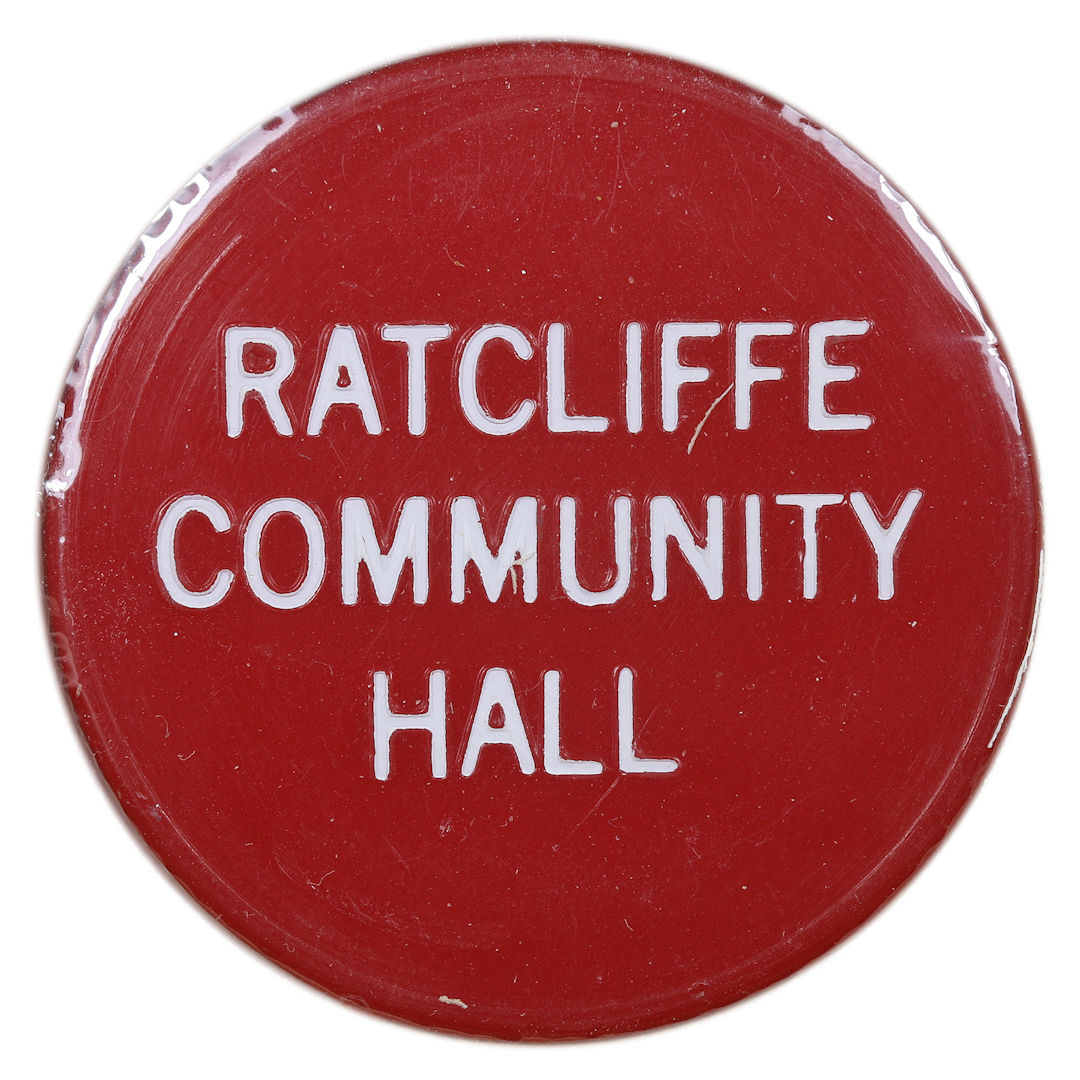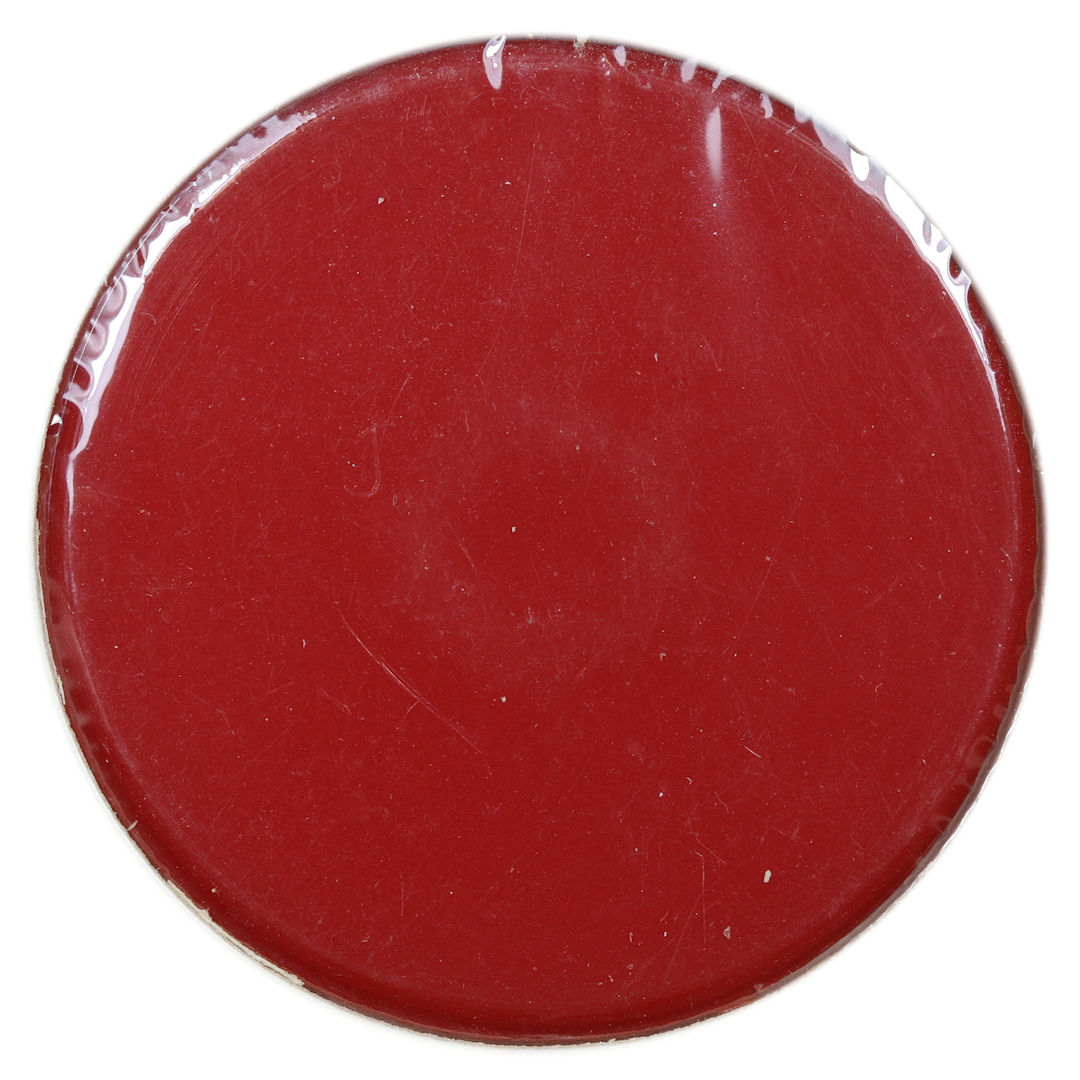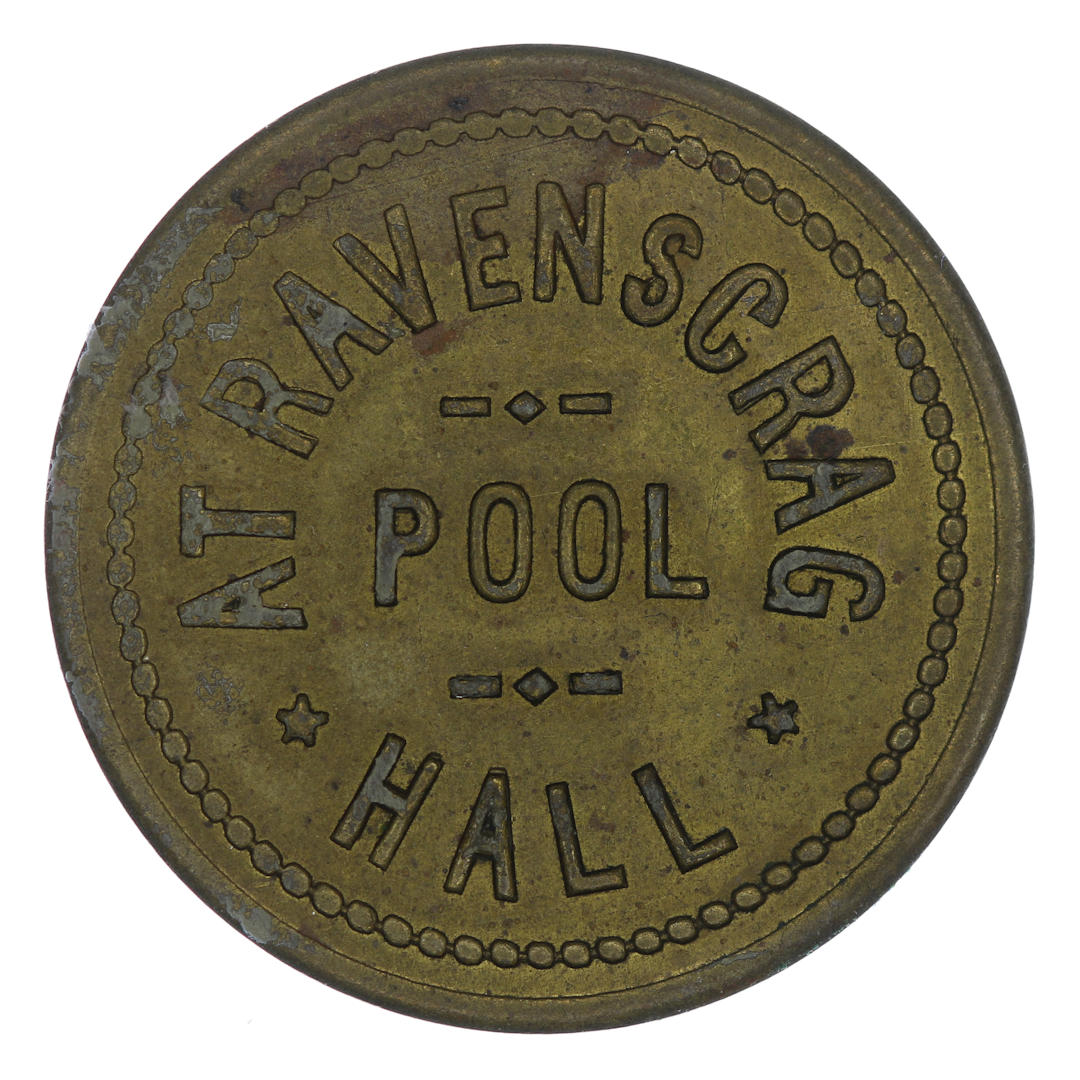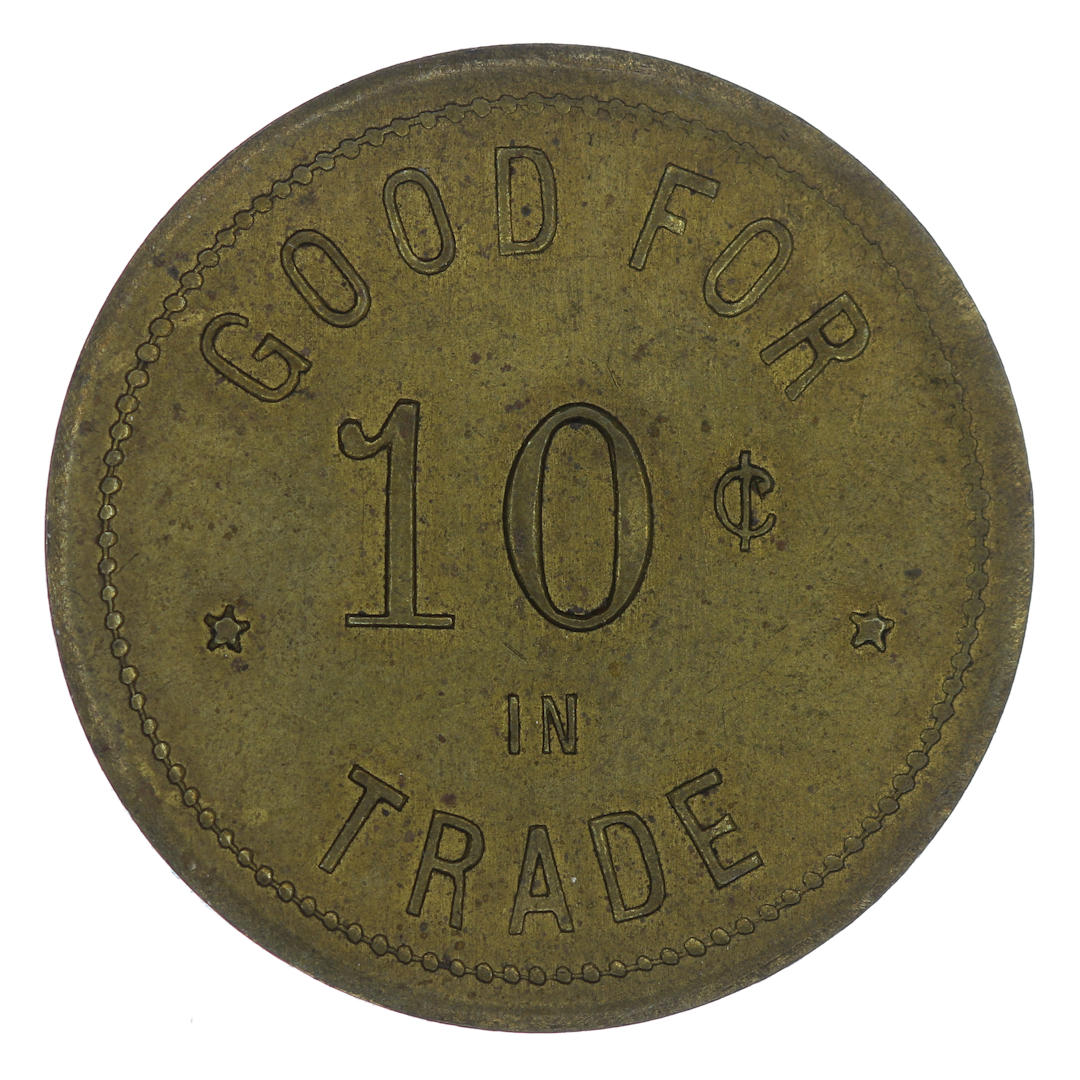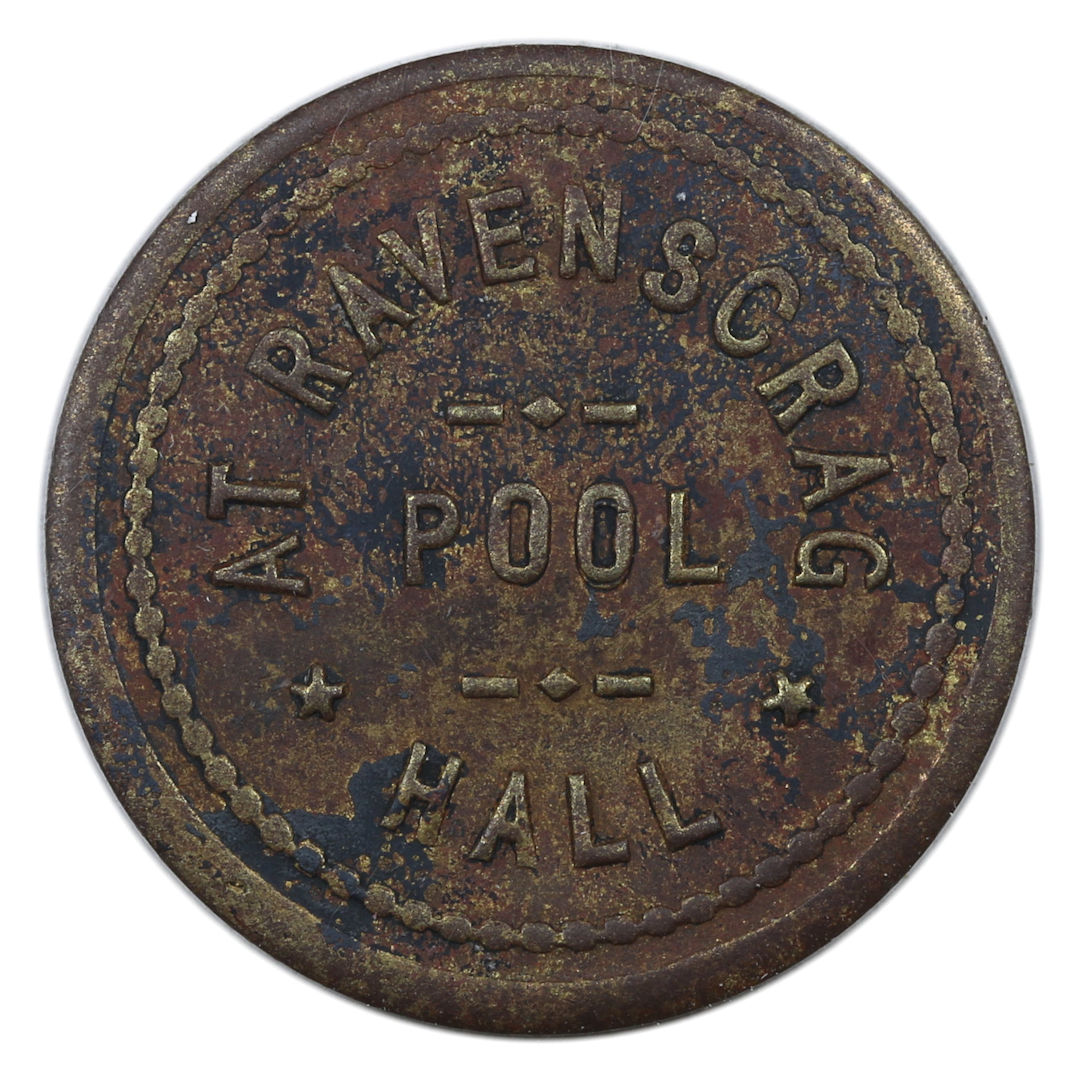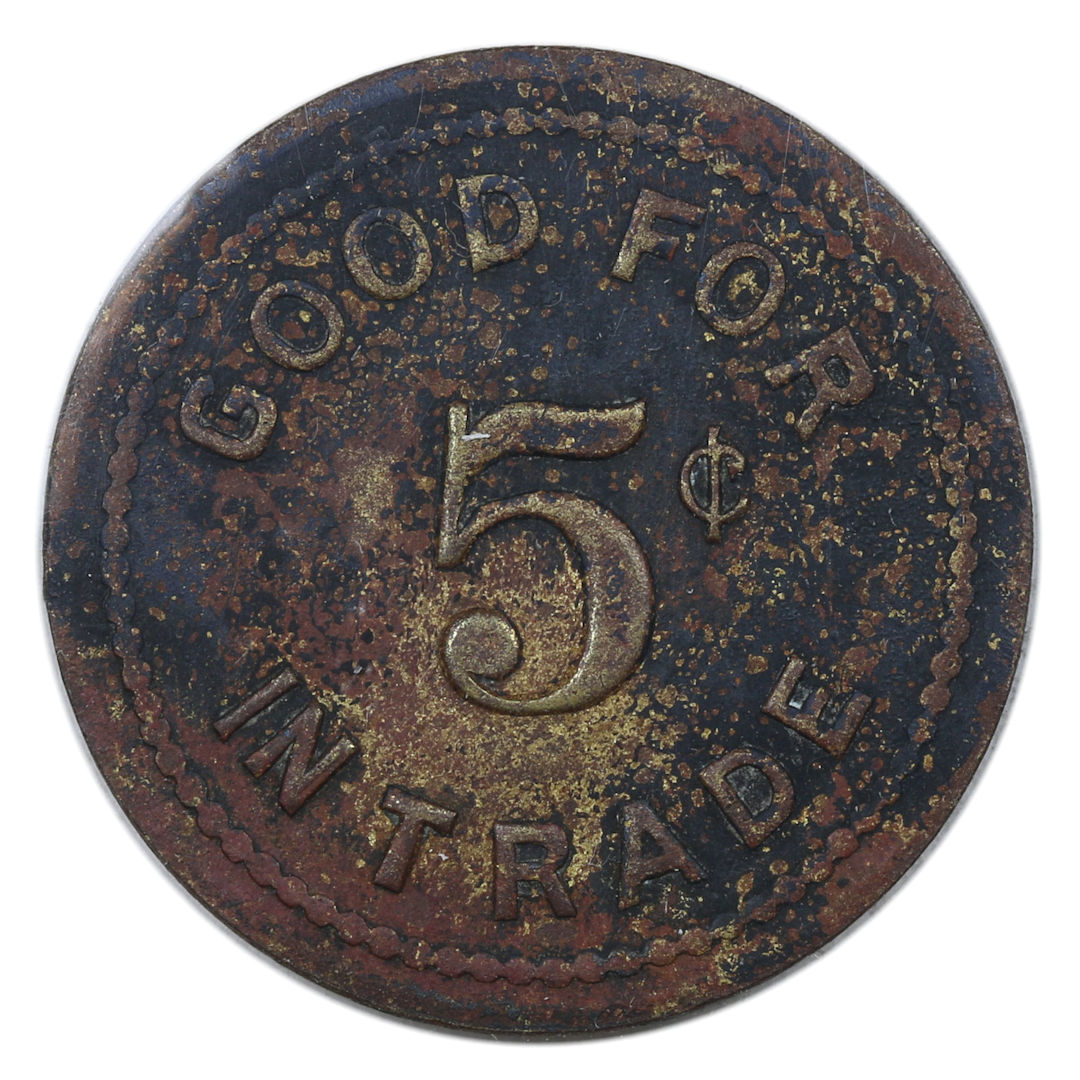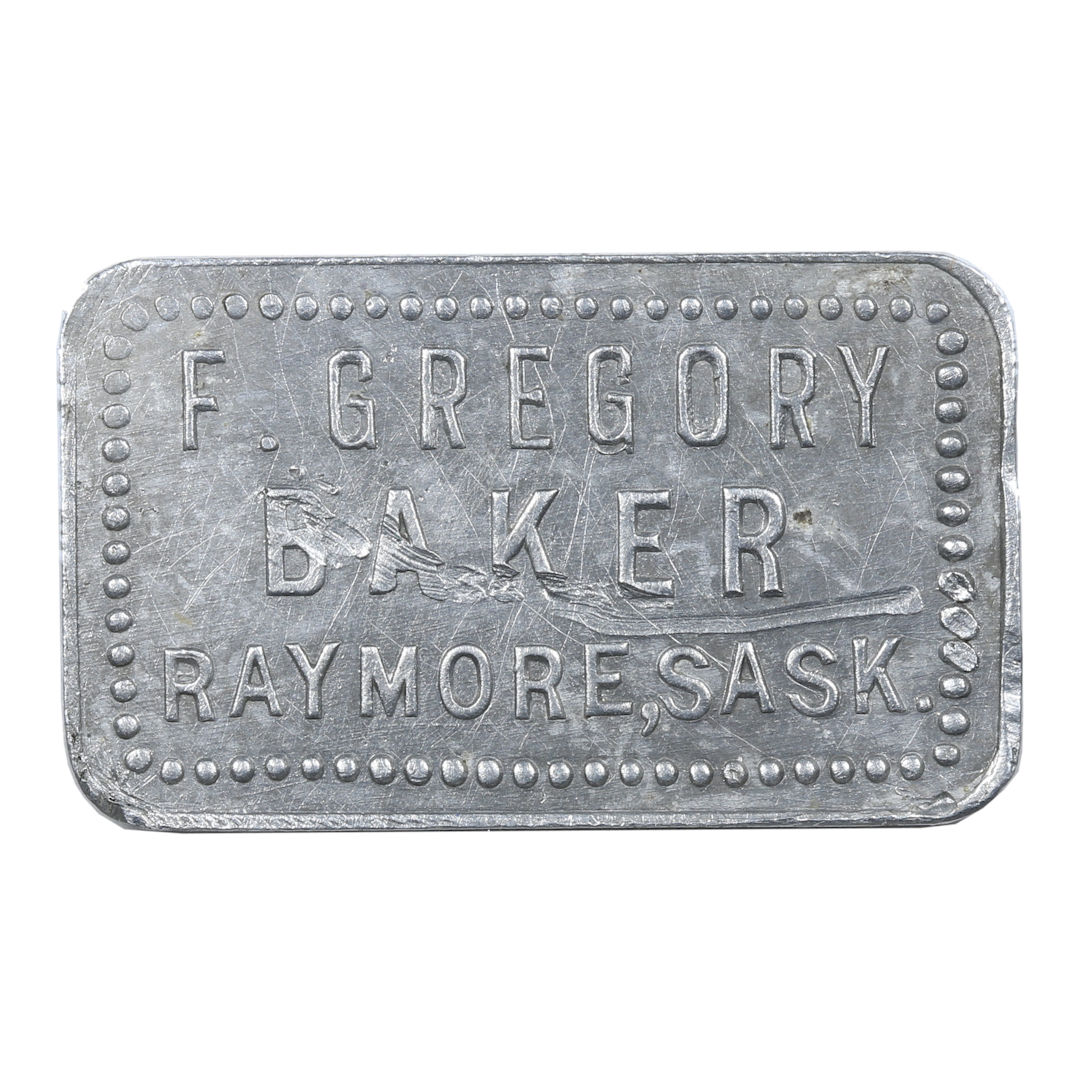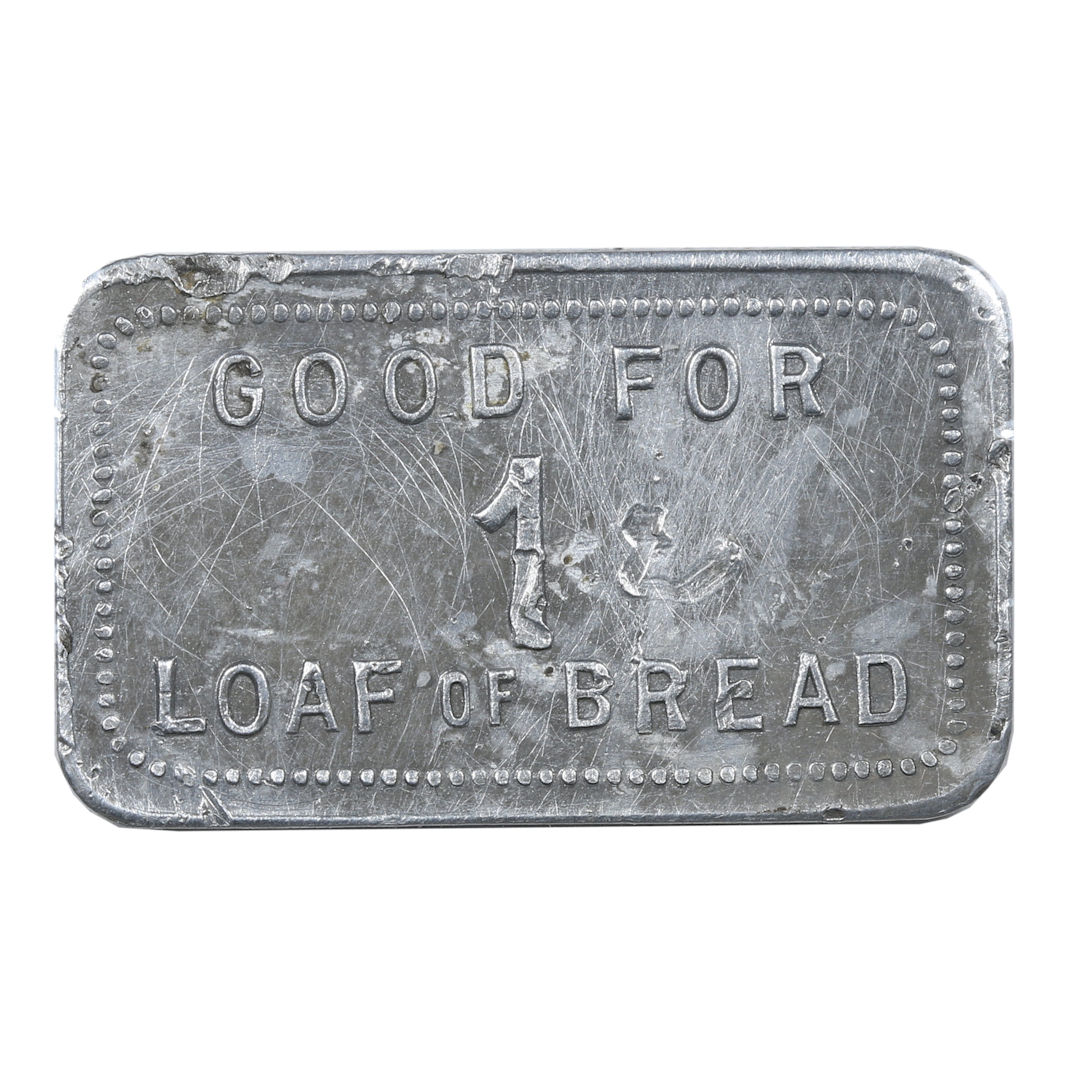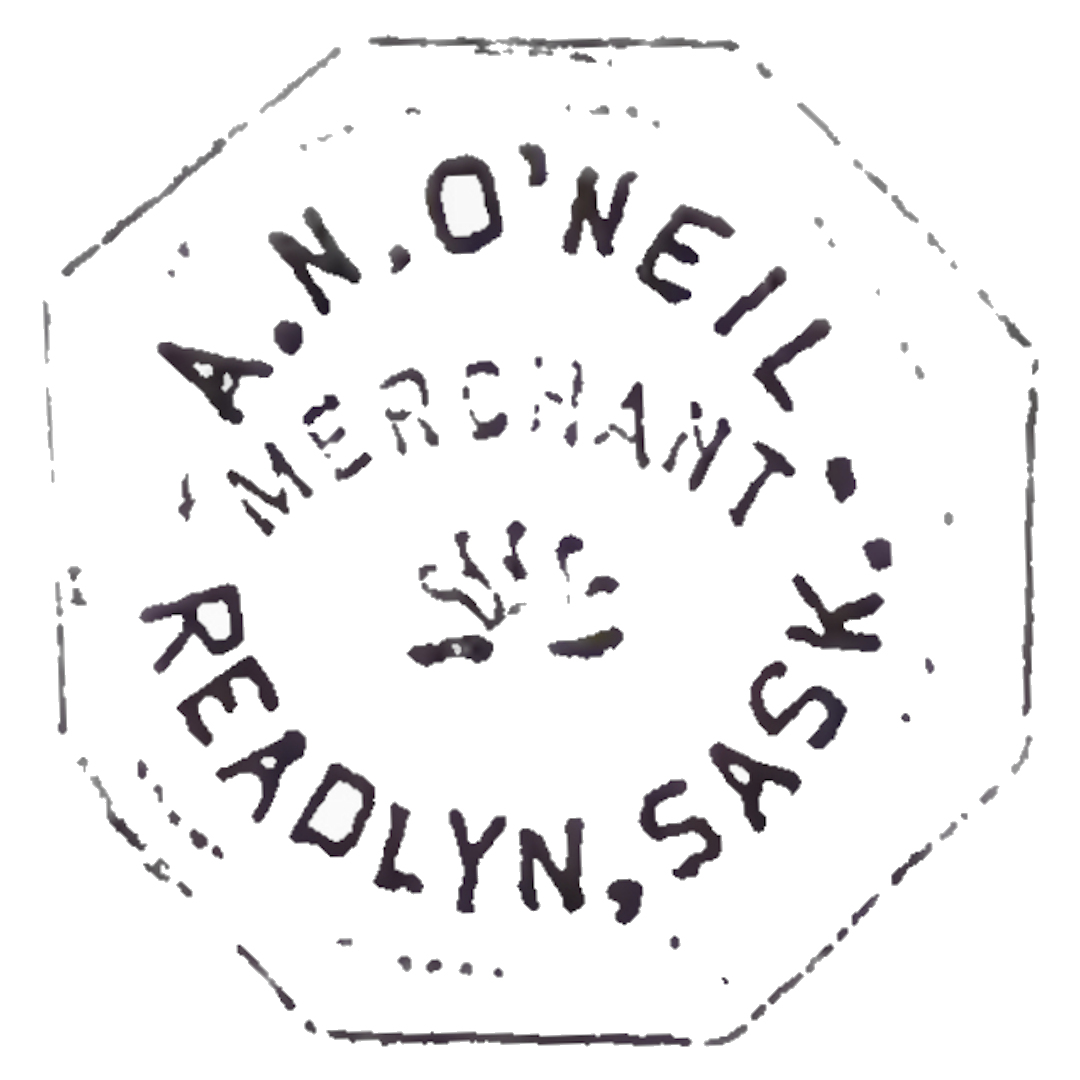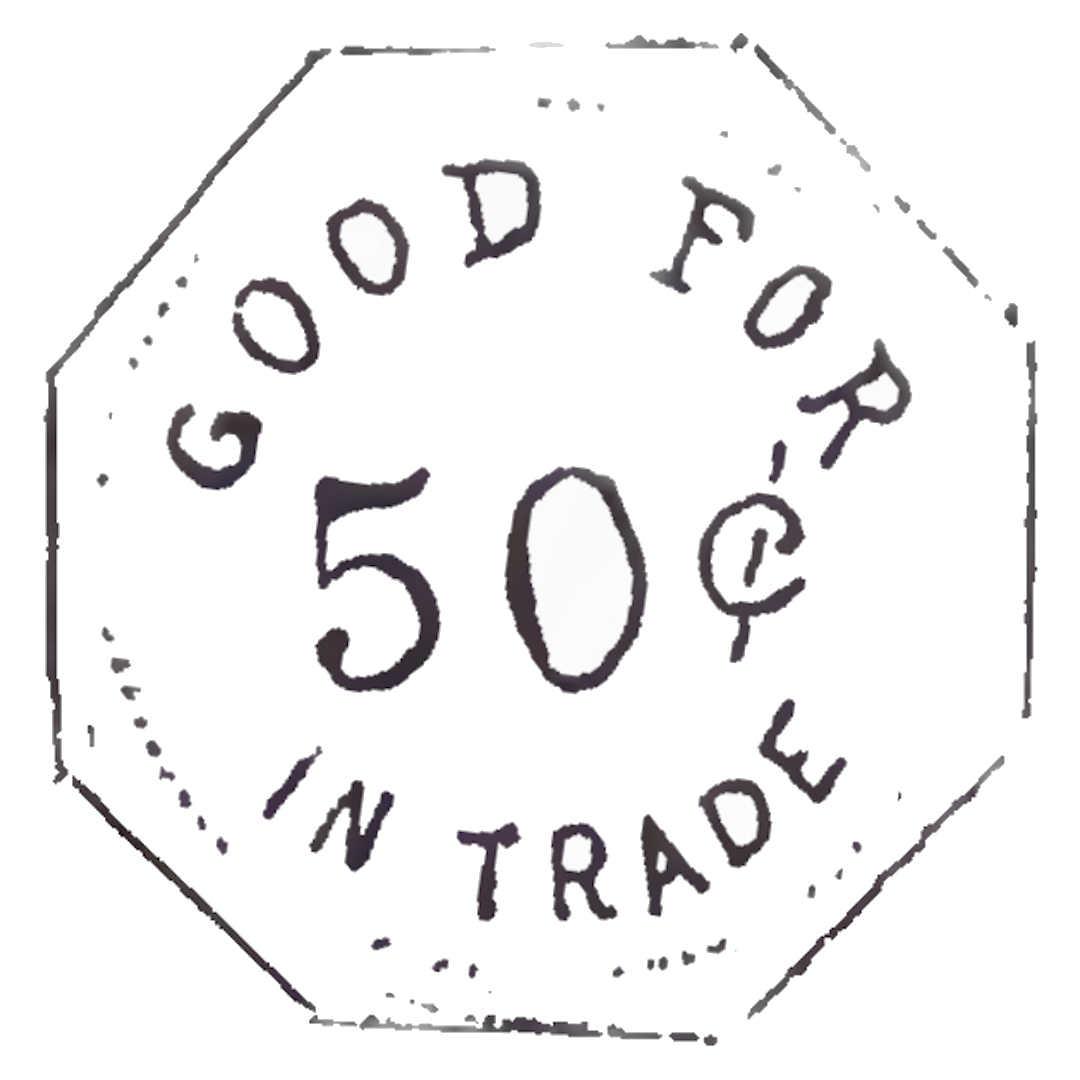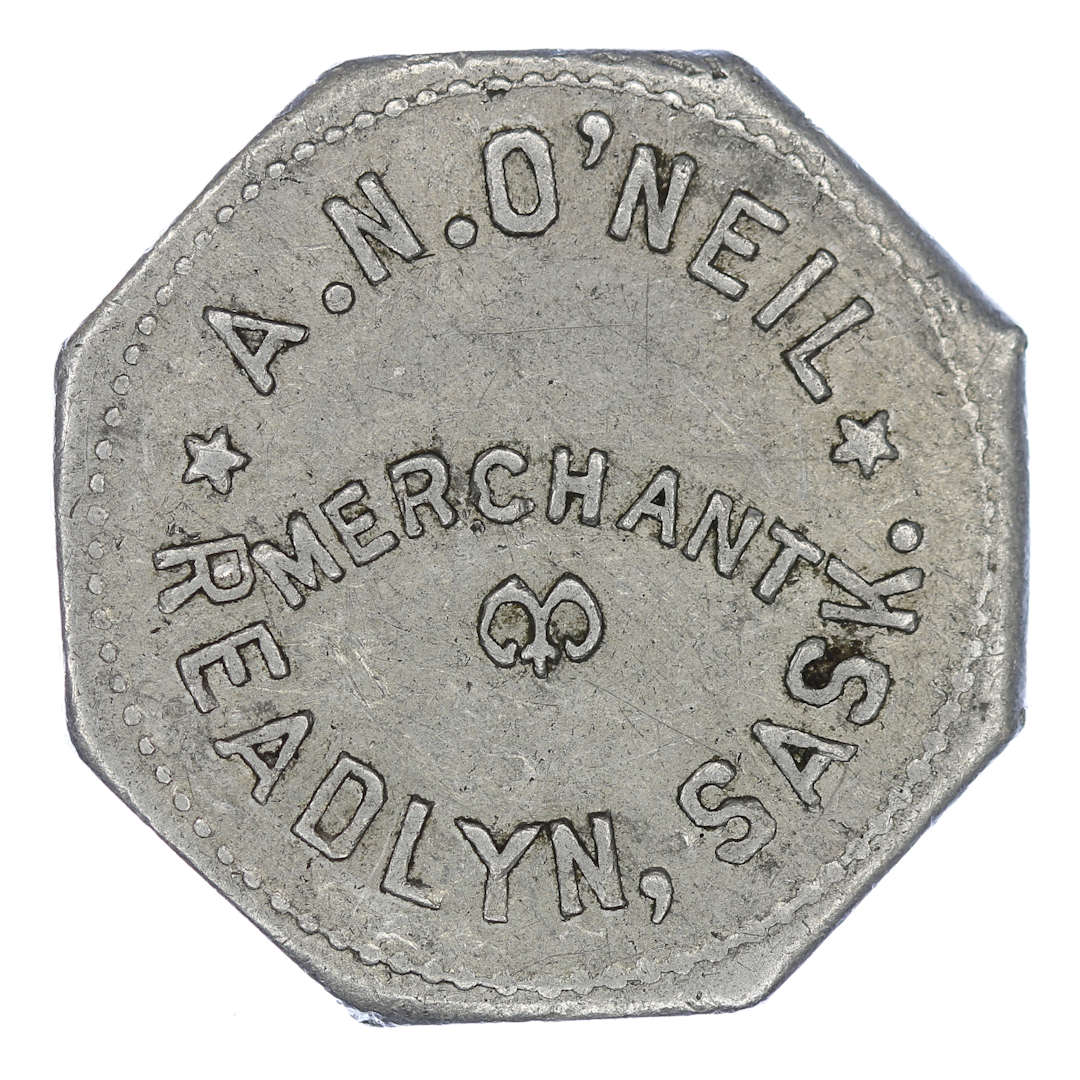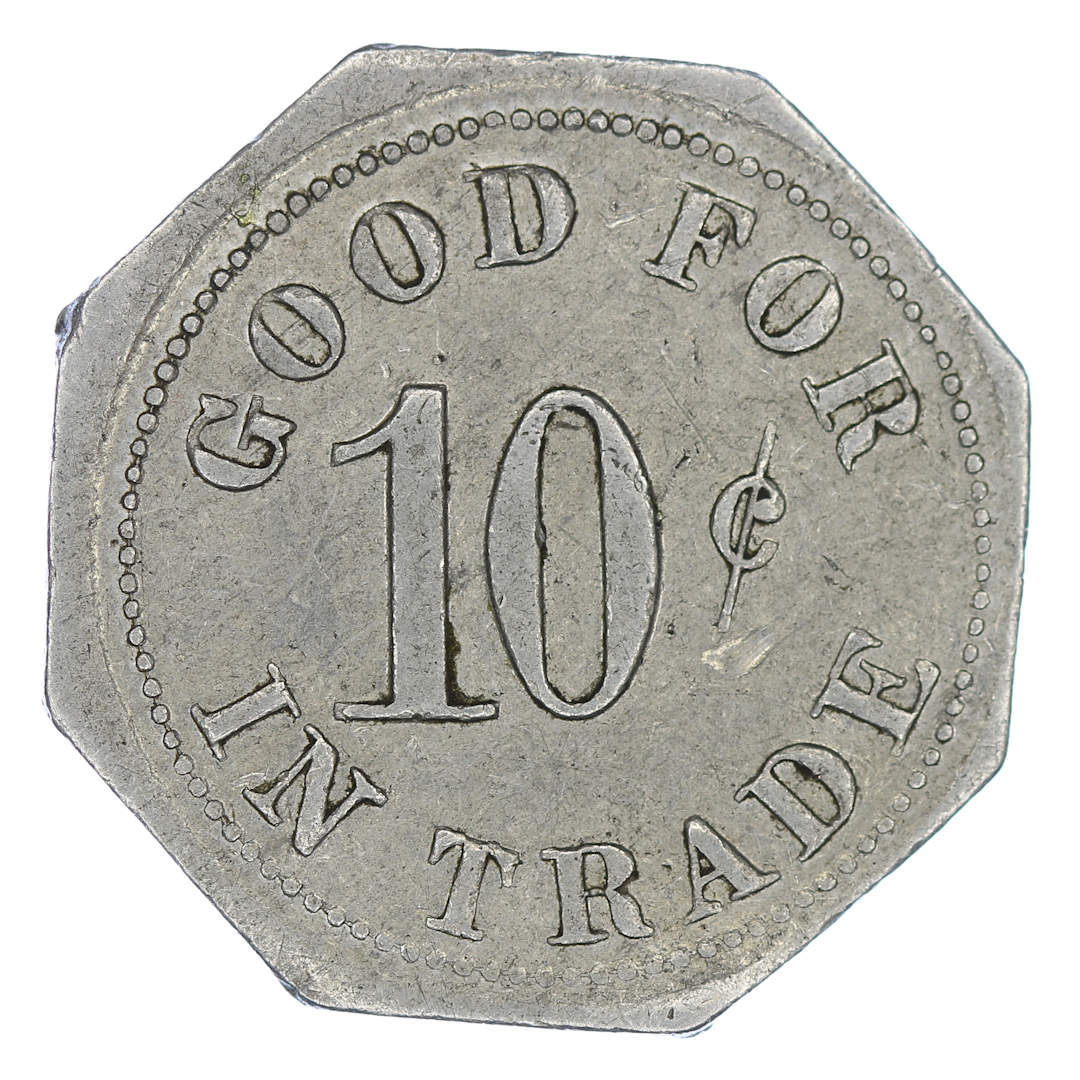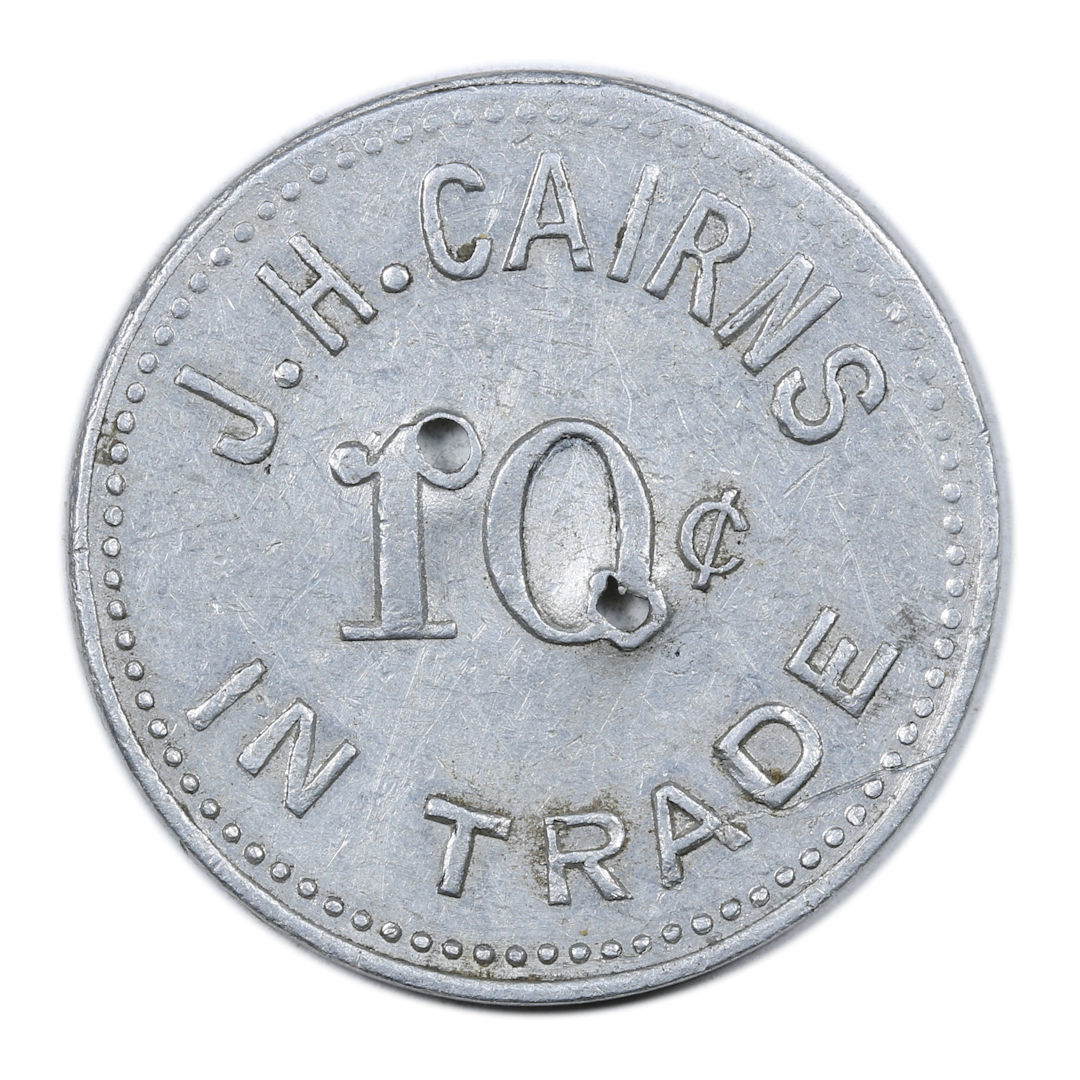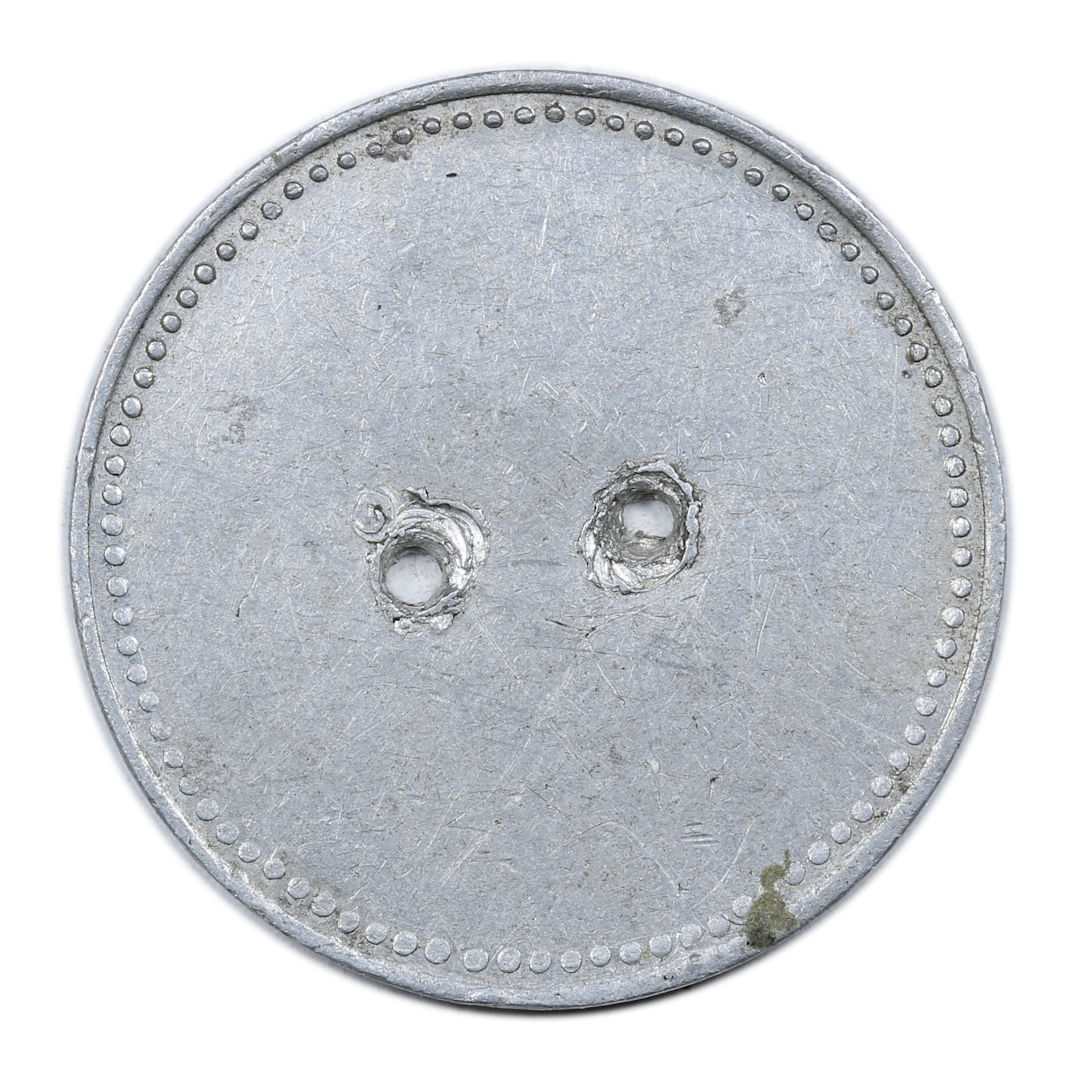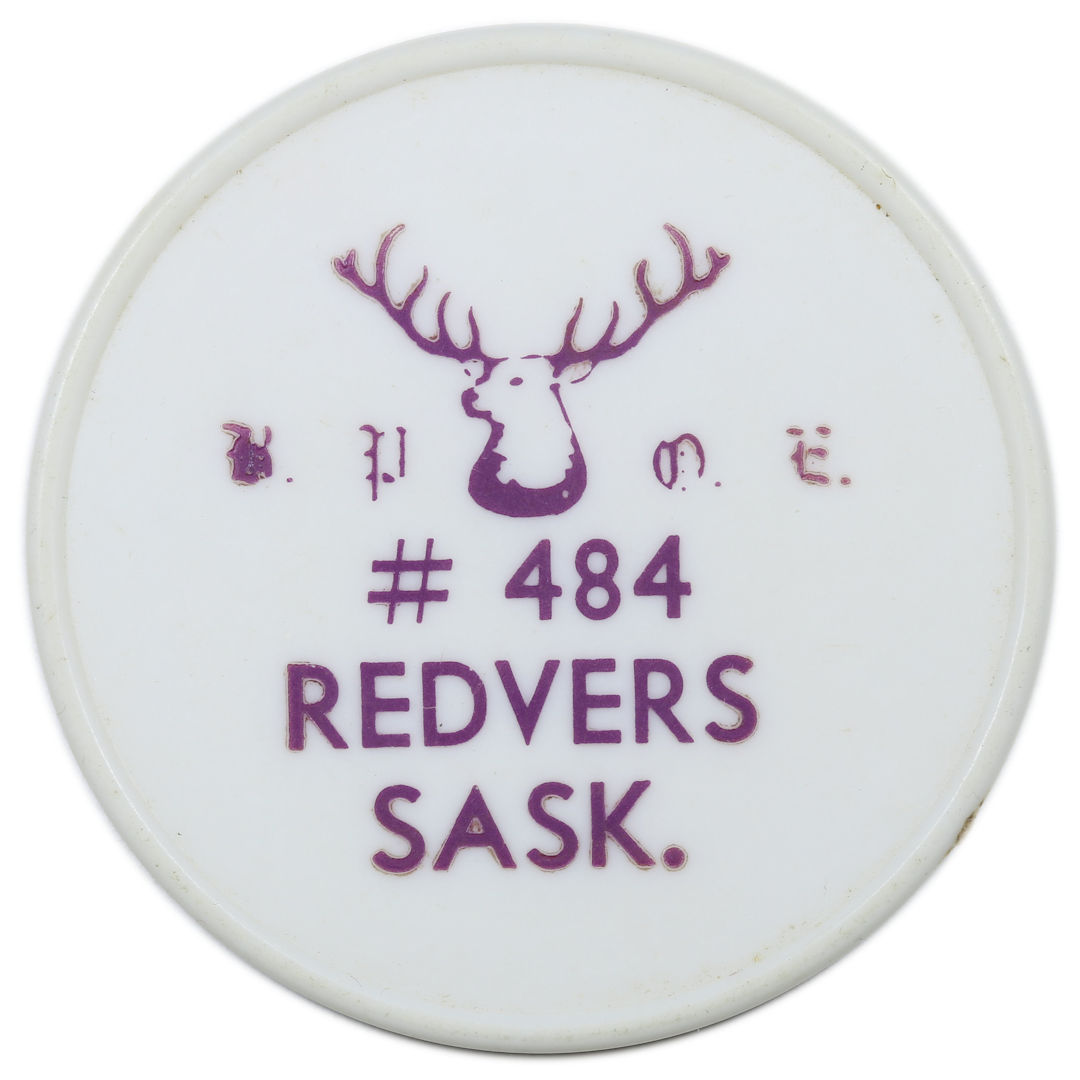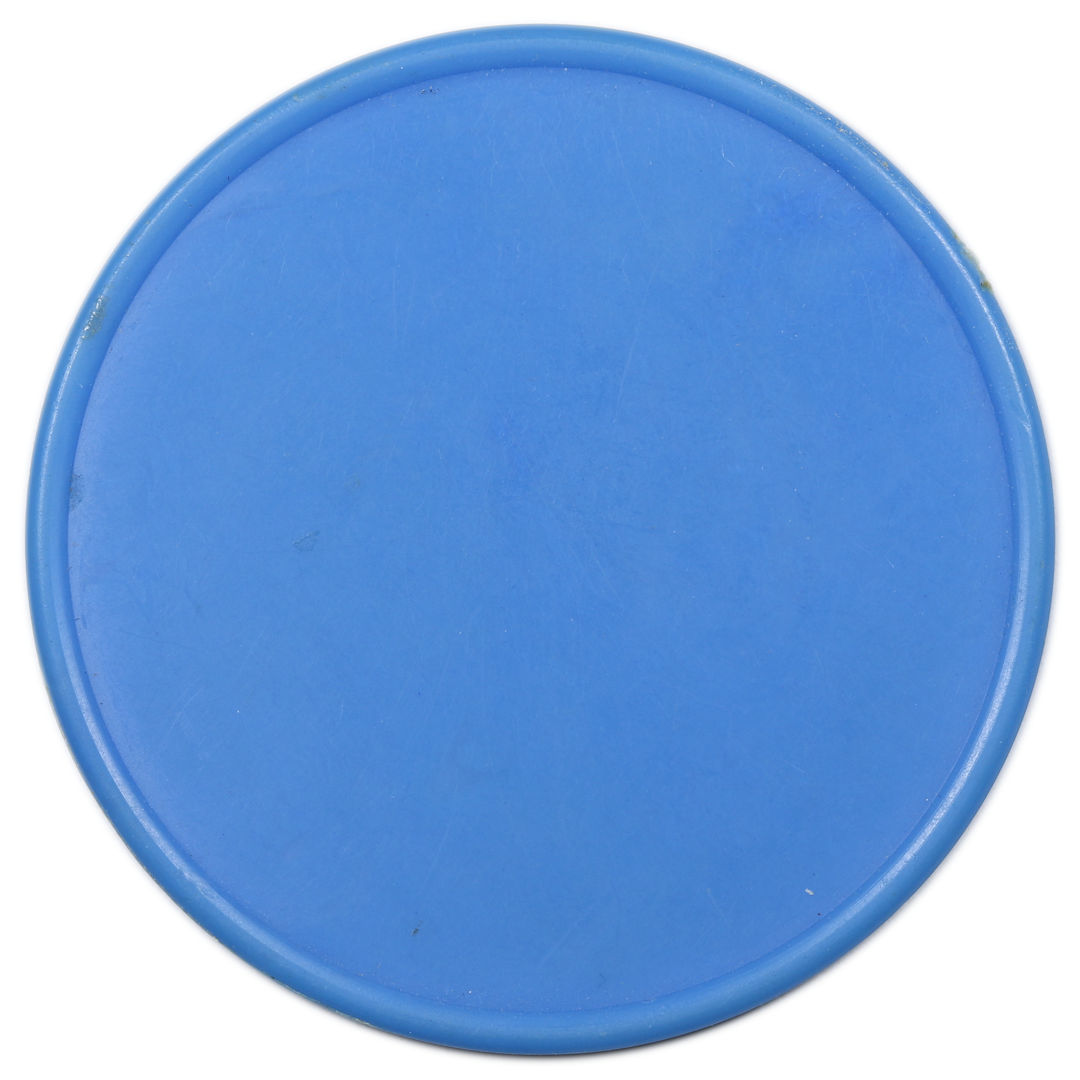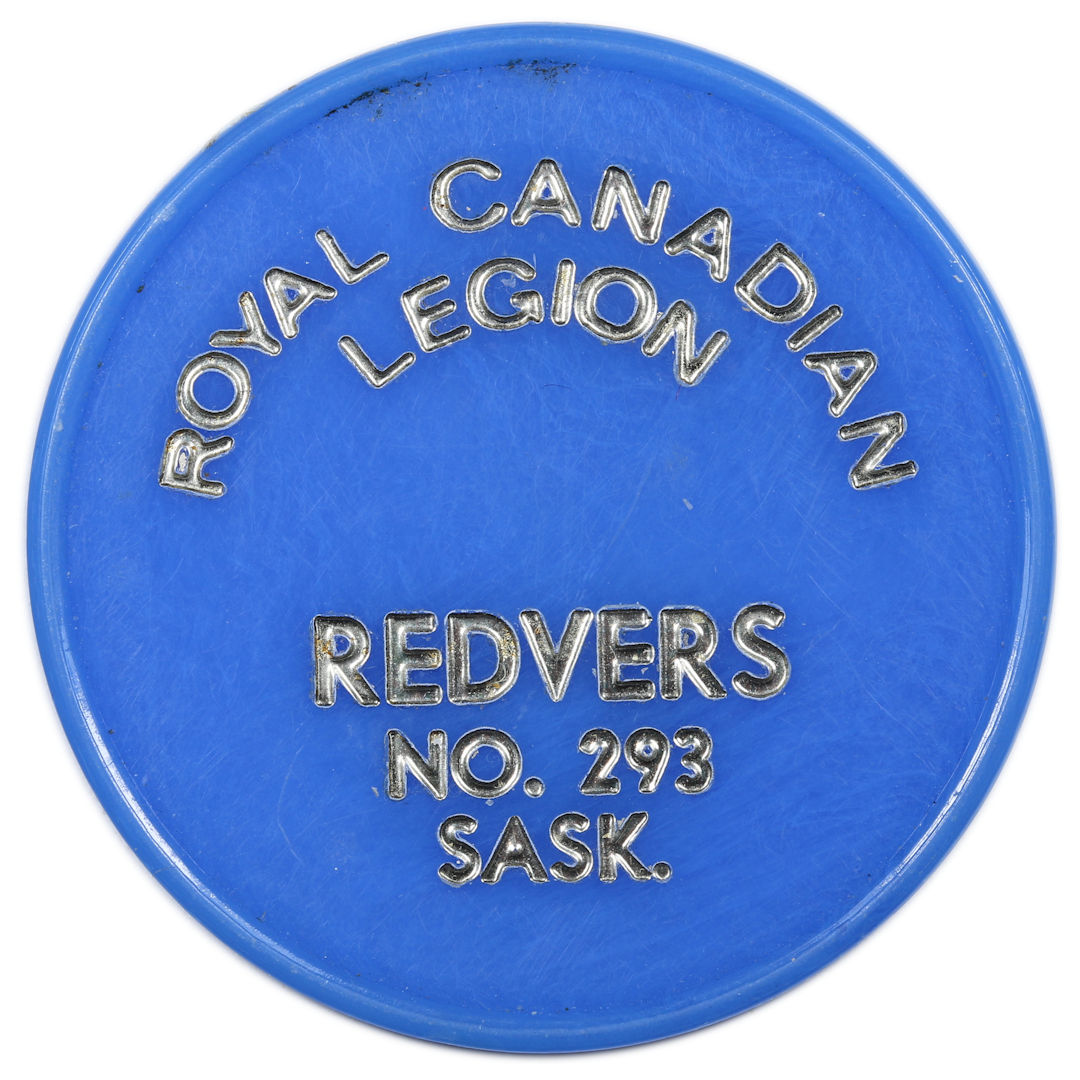Saskatchewan Merchant Trade Tokens
Token numbers 4000m to 4155t1, Radisson to RedversNOTE: Click on any photo to load a much larger version of the same photo |
| Return to Index Page |
Obverse Photo |
Reverse Photo |
Cat # |
Town/City |
Obverse Content (Reverse Content) [Token and Text Colour] |
Notes |
Type |
Shape |
Size |
Rarity |
4000 m |
Radisson |
Y.D. Eddy Radisson Sask. (Good For 4 Loaves Of Bread) Yee Eddy started the general store in 1919 and tokens were issued around 1925 when he purchased his bread from the Saskatoon Bread Co. Tokens were discontinued in 1936 and the business was sold in 1946. |
A |
R |
29 |
10 |
|||
4000 r |
Radisson |
Y.D. Eddy Radisson Sask. (Good For 1 Loaf Of Bread) Yee Eddy started the general store in 1919 and tokens were issued around 1925 when he purchased his bread from the Saskatoon Bread Co. Tokens were discontinued in 1936 and the business was sold in 1946. |
A |
R |
25 |
8 |
|||
4002 t |
Radisson |
{Elks Head Logo} Lodge #558 Radisson Sask. (uniface) [White token color, Purple lettering] The lodge was formed on January 10th, 1976. An earlier lodge #99 was started in 1928 but gave up the charter in 1934. Tokens were issued in October 1976, issue 1,000. |
P |
R |
42 |
1 |
|||
4002 t1 |
Radisson |
Radisson B.P.O. Elk's Lodge # 558 (uniface) [Red token color, White lettering] |
P |
R |
31 |
1 |
|||
4005 r |
Radisson |
Empire Bakery Radisson, Sask. (Good For One Loaf Bread) Flora J. Nichol operated this bakery from 1914 to 1919. No record as to when the tokens were issued. |
A |
O |
24 |
6 |
|||
4010 r |
Radisson |
The Pioneer Bakery J.E. Orange (Good For 1 Loaf Of Bread) John Orange started the confectionery in 1909. In 1917 he was listed in the directory as 'confectioneer and baker'. Discontinued the bakery in 1926 but continued on in the confectionery until 1942. |
A |
O |
24 |
9 |
|||
4015 p |
Radisson |
F. Wenn Radisson, Sask. (Good For 1 Pint) Frederick Wenn, a dairy merchant in Nottingham, England; emigrated to Canada in 1906 and settled at Radisson where he started a dairy. Tokens were issued in 1908 and used until 1918 when the dairy herd was sold. |
Used 1908-1918 |
A |
R |
25 |
3 |
||
4015 q |
Radisson |
F. Wenn Radisson, Sask. (Good For 1 Quart) Frederick Wenn, a dairy merchant in Nottingham, England; emigrated to Canada in 1906 and settled at Radisson where he started a dairy. Tokens were issued in 1908 and used until 1918 when the dairy herd was sold. |
Used 1908-1918 |
A |
R |
28 |
3 |
||
4045 t |
Radville |
Radville Elks Club (B.P.O.E. Good For One Drink) [White token color, Black lettering] |
P |
R |
38 |
1 |
|||
4047 t |
Radville |
Soda Lake Centre (uniface) [Yellow token color, Black lettering] |
Soda Lake is near Radville |
P |
R |
36 |
1 |
||
4050 r |
Radville |
W.J. Ferguson Baker Radville (Good For One Loaf) William John Ferguson came west in 1911 at the age of 16 to work in his uncle's bakery, Snelgrove's Bakery, Weyburn. Enlisted in the army in 1915 and arrived back in Weyburn in 1919 at which time he became a traveller for Walker Fruits. Purchased the bakery in Radville from John Gray in 1924 and in 1929 sold to Pringle Lees. |
A |
Sc9 |
27 |
7 |
|||
4052 r |
Radville |
P. Lees Crispo Bread Cakes & Pastry (Good For One Loaf Of Bread) Pringle Lees purchased the City Bakery in Maple Creek from Fleming in 1923. In 1925 he sold out to O. A. Dunbar and moved to Morse where he bought the bakery from James Walker. In 1929 Lees sold this bakery to George Ridgeville and purchased the Radville bakery from Ferguson. Sold out in 1932 to J. H. Forsyth of Carnduff who operated both bakeries for a number of years. The tokens do not have any location stamped on them so it is quite possible that Lees used these tokens in Maple Creek and Morse but have not been able to find any old-timer in either of these areas that remember the tokens and the tokens were found at Radville and many people remember the tokens being used here. |
A |
O |
27 |
7 |
|||
4056 r |
Radville |
Palm Confectionery Radville (Good For 1 Loaf Of Bread) Jim Wong, owner of the Boston Cafe, helped his nephew George Wong to start the Palm Confectionery in 1930, to cater to the needs of the younger people of the community, and this would help to keep his cafe free for the meals etc. Due to the generosity of George and everyone taking advantage of this the business was forced to close down in 1933. |
A |
R |
25 |
10 |
|||
4060 d |
Radville |
Joe Shibley Radville Sask. (Good For $1.00 In Trade) Joseph Shibley emigrated to Canada in 1902 at the age of 13 and in 1909 homesteaded just 7 miles west of what was to become the town of Radville. On the 13th of August 1913 the crops were completely wiped out by hail and the following year he gave up farming and moved to Radville where he opened a general store in competition with six other established stores. During the depression which followed the first great war, all six competitors had gone bankrupt leaving his the only store for miles around until 1923. The economy began to improve and everything was going full speed ahead until the Great Depression of the thirties. In September of 1931 he bought three stores in the neighboring towns of Gladmar, Minton and Khedive. These were part of a chain of grocery stores operating throughout southern Saskatchewan under the name of "McBrides". At the beginning of the depression of the thirties, the Saskatchewan Relief Commission was formed for the purpose of aiding financially those who were out of work and particularly the farmers who had suffered successive crop failures. This aid was given out in the form of relief orders made payable to the merchant the farmer would designate. This is when these tokens came into being. They were given as change when the recipient did not spend the whole order at one time and would be honored at any future date. Joseph Shibley passed away in the spring of 1942 and the business passed on to his sons who continued operation until 1954 when the business was sold and a few years later they moved to Alberta. |
A |
R |
35 |
5 |
|||
4060 e |
Radville |
Joe Shibley Radville Sask. (Good For 50 Cts. Trade) Joseph Shibley emigrated to Canada in 1902 at the age of 13 and in 1909 homesteaded just 7 miles west of what was to become the town of Radville. On the 13th of August 1913 the crops were completely wiped out by hail and the following year he gave up farming and moved to Radville where he opened a general store in competition with six other established stores. During the depression which followed the first great war, all six competitors had gone bankrupt leaving his the only store for miles around until 1923. The economy began to improve and everything was going full speed ahead until the Great Depression of the thirties. In September of 1931 he bought three stores in the neighboring towns of Gladmar, Minton and Khedive. These were part of a chain of grocery stores operating throughout southern Saskatchewan under the name of "McBrides". At the beginning of the depression of the thirties, the Saskatchewan Relief Commission was formed for the purpose of aiding financially those who were out of work and particularly the farmers who had suffered successive crop failures. This aid was given out in the form of relief orders made payable to the merchant the farmer would designate. This is when these tokens came into being. They were given as change when the recipient did not spend the whole order at one time and would be honored at any future date. Joseph Shibley passed away in the spring of 1942 and the business passed on to his sons who continued operation until 1954 when the business was sold and a few years later they moved to Alberta. |
A |
R |
32 |
5 |
|||
4060 f |
Radville |
Joe Shibley Radville Sask. (Good For 25¢ In Trade) Joseph Shibley emigrated to Canada in 1902 at the age of 13 and in 1909 homesteaded just 7 miles west of what was to become the town of Radville. On the 13th of August 1913 the crops were completely wiped out by hail and the following year he gave up farming and moved to Radville where he opened a general store in competition with six other established stores. During the depression which followed the first great war, all six competitors had gone bankrupt leaving his the only store for miles around until 1923. The economy began to improve and everything was going full speed ahead until the Great Depression of the thirties. In September of 1931 he bought three stores in the neighboring towns of Gladmar, Minton and Khedive. These were part of a chain of grocery stores operating throughout southern Saskatchewan under the name of "McBrides". At the beginning of the depression of the thirties, the Saskatchewan Relief Commission was formed for the purpose of aiding financially those who were out of work and particularly the farmers who had suffered successive crop failures. This aid was given out in the form of relief orders made payable to the merchant the farmer would designate. This is when these tokens came into being. They were given as change when the recipient did not spend the whole order at one time and would be honored at any future date. Joseph Shibley passed away in the spring of 1942 and the business passed on to his sons who continued operation until 1954 when the business was sold and a few years later they moved to Alberta. |
A |
R |
29 |
5 |
|||
4060 g |
Radville |
Joe Shibley Radville Sask. (Good For 10¢ In Trade) Joseph Shibley emigrated to Canada in 1902 at the age of 13 and in 1909 homesteaded just 7 miles west of what was to become the town of Radville. On the 13th of August 1913 the crops were completely wiped out by hail and the following year he gave up farming and moved to Radville where he opened a general store in competition with six other established stores. During the depression which followed the first great war, all six competitors had gone bankrupt leaving his the only store for miles around until 1923. The economy began to improve and everything was going full speed ahead until the Great Depression of the thirties. In September of 1931 he bought three stores in the neighboring towns of Gladmar, Minton and Khedive. These were part of a chain of grocery stores operating throughout southern Saskatchewan under the name of "McBrides". At the beginning of the depression of the thirties, the Saskatchewan Relief Commission was formed for the purpose of aiding financially those who were out of work and particularly the farmers who had suffered successive crop failures. This aid was given out in the form of relief orders made payable to the merchant the farmer would designate. This is when these tokens came into being. They were given as change when the recipient did not spend the whole order at one time and would be honored at any future date. Joseph Shibley passed away in the spring of 1942 and the business passed on to his sons who continued operation until 1954 when the business was sold and a few years later they moved to Alberta. |
A |
R |
25 |
5 |
|||
4060 h |
Radville |
Joe Shibley Radville Sask. (Good For 5¢ In Trade) Joseph Shibley emigrated to Canada in 1902 at the age of 13 and in 1909 homesteaded just 7 miles west of what was to become the town of Radville. On the 13th of August 1913 the crops were completely wiped out by hail and the following year he gave up farming and moved to Radville where he opened a general store in competition with six other established stores. During the depression which followed the first great war, all six competitors had gone bankrupt leaving his the only store for miles around until 1923. The economy began to improve and everything was going full speed ahead until the Great Depression of the thirties. In September of 1931 he bought three stores in the neighboring towns of Gladmar, Minton and Khedive. These were part of a chain of grocery stores operating throughout southern Saskatchewan under the name of "McBrides". At the beginning of the depression of the thirties, the Saskatchewan Relief Commission was formed for the purpose of aiding financially those who were out of work and particularly the farmers who had suffered successive crop failures. This aid was given out in the form of relief orders made payable to the merchant the farmer would designate. This is when these tokens came into being. They were given as change when the recipient did not spend the whole order at one time and would be honored at any future date. Joseph Shibley passed away in the spring of 1942 and the business passed on to his sons who continued operation until 1954 when the business was sold and a few years later they moved to Alberta. |
A |
R |
22 |
5 |
|||
4060 j |
Radville |
Joe Shibley Radville Sask. (Good For 1¢ In Trade) Joseph Shibley emigrated to Canada in 1902 at the age of 13 and in 1909 homesteaded just 7 miles west of what was to become the town of Radville. On the 13th of August 1913 the crops were completely wiped out by hail and the following year he gave up farming and moved to Radville where he opened a general store in competition with six other established stores. During the depression which followed the first great war, all six competitors had gone bankrupt leaving his the only store for miles around until 1923. The economy began to improve and everything was going full speed ahead until the Great Depression of the thirties. In September of 1931 he bought three stores in the neighboring towns of Gladmar, Minton and Khedive. These were part of a chain of grocery stores operating throughout southern Saskatchewan under the name of "McBrides". At the beginning of the depression of the thirties, the Saskatchewan Relief Commission was formed for the purpose of aiding financially those who were out of work and particularly the farmers who had suffered successive crop failures. This aid was given out in the form of relief orders made payable to the merchant the farmer would designate. This is when these tokens came into being. They were given as change when the recipient did not spend the whole order at one time and would be honored at any future date. Joseph Shibley passed away in the spring of 1942 and the business passed on to his sons who continued operation until 1954 when the business was sold and a few years later they moved to Alberta. |
A |
R |
19 |
5 |
|||
4065 t |
Rama |
Rama Sports Club (Rama Sports Club) [Blue token color, Gold lettering] |
P |
R |
32 |
??? |
|||
4075 t |
Ratcliffe |
Ratcliffe Community Hall (uniface) [White token color, Red lettering] Issued in 1973, issue 500. |
P |
R |
38 |
1 |
|||
4075 t1 |
Ratcliffe |
Ratcliffe Community Hall (uniface) [Red token color, White lettering] |
P |
R |
38 |
1 |
|||
4100 g |
Ravenscrag |
At Ravenscrag Pool Hall (Good For 10¢ In Trade) William Gregory built the pool hall in 1916 and tokens were issued in 1917 for use in the gaming machines. The business was sold in 1922 to George Skahili. |
B |
R |
29 |
9 |
|||
4100 h |
Ravenscrag |
At Ravenscrag Pool Hall (Good For 5¢ In Trade) William Gregory built the pool hall in 1916 and tokens were issued in 1917 for use in the gaming machines. The business was sold in 1922 to George Skahili. |
B |
R |
25 |
8 |
|||
4115 r |
Raymore |
F. Gregory Baker Raymore, Sask. (Good For 1 Loaf Of Bread) |
A |
Re31 |
19 |
10 |
|||
4125 d |
Readlyn |
A.N. O'Neil Merchant Readlyn, Sask. (Good For $1.00 In Trade) Mrs. Jordon started the general store in 1915 and in 1916 took in her son-in-law, Andrew O'Neil as a partner. In 1919 O'Neil purchased her share and operated the store until sold in 1929 to William Harker. It is thought that tokens were issued around 1920 and used until the store was sold. |
A |
O |
36 |
10 |
|||
4125 e |
Readlyn |
A.N. O'Neil Merchant Readlyn, Sask. (Good For 50¢ In Trade) Mrs. Jordon started the general store in 1915 and in 1916 took in her son-in-law, Andrew O'Neil as a partner. In 1919 O'Neil purchased her share and operated the store until sold in 1929 to William Harker. It is thought that tokens were issued around 1920 and used until the store was sold. |
A |
O |
32 |
10 |
|||
4125 g |
Readlyn |
A.N. O'Neil Merchant Readlyn, Sask. (Good For 10¢ In Trade) Mrs. Jordon started the general store in 1915 and in 1916 took in her son-in-law, Andrew O'Neil as a partner. In 1919 O'Neil purchased her share and operated the store until sold in 1929 to William Harker. It is thought that tokens were issued around 1920 and used until the store was sold. |
A |
O |
25 |
10 |
|||
4125 h |
Readlyn |
A.N. O'Neil Merchant Readlyn, Sask. (Good For 5¢ In Trade) Mrs. Jordon started the general store in 1915 and in 1916 took in her son-in-law, Andrew O'Neil as a partner. In 1919 O'Neil purchased her share and operated the store until sold in 1929 to William Harker. It is thought that tokens were issued around 1920 and used until the store was sold. |
A |
R |
22 |
10 |
|||
4130 g |
Readlyn |
J.H. Cairns 10¢ In Trade (uniface) |
A |
R |
28 |
9 |
|||
4131 g |
Readlyn |
J.H. Cairns Good For 10 In Merchandise (J.H. Cairns Good For 10 In Merchandise) |
A |
O |
25 |
10 |
|||
4150 t |
Redvers |
{Elks Head Logo} #484 Redvers Sask. (uniface) [White token color, Purple lettering] Issued in 1973, issue 1,000. |
P |
R |
42 |
1 |
|||
4150 t1 |
Redvers |
{Elks Logo}, Redvers Lodge #384 ({Elks Logo}, Redvers Lodge #384) [White token color, Purple lettering] |
P |
R |
35 |
1 |
|||
4155 t |
Redvers |
Royal Canadian Legion Redvers No. 293 Sask. (uniface) [Blue token color, Gold lettering] The Branch was formed in 1946. Tokens issued in 1967, issue 1,000. |
Larger letters |
P |
R |
42 |
1 |
||
4155 t1 |
Redvers |
Royal Canadian Legion Redvers No. 293 Sask. (uniface) [Blue token color, Gold lettering] |
P |
R |
42 |
1 |
| Return to Index Page | |




